Before The Mustang
By Jim and Cheryl Farrell
John Orfe never attended art school but was one of those naturally talented artists who loved cars, especially race cars. He was hired by Alex Tremulis, and started as a Ford designer in June 1955.
By 1958, Orfe was assigned to Elwood Engel’s new Corporate Advanced studio, where he designed the grille/bumper area of Engel’s proposed 1961 Thunderbird/Continental and the grille of the winning ’61 Thunderbird proposal. Orfe later worked on the design of the Lincoln Mark IX, the Levacar, the Gyron, Allegro, Median, Stiletto, the Thunderbird Italien, and several other concept cars. Orfe also prepared the presentation booklet when Engel’s ’61 Thunderbird proposal was shown to Ford’s Product Planning Committee. (They picked the proposal from the Ford studio.) Because Robert McNamara was absent from that meeting, Orfe kept McNamara’s copy of the booklet.
Influenced by the success of the first-generation Corvair Monza, Ford management decided to produce an inexpensive four-passenger sporty car. So, by 1960, designers in Engel’s Corporate Advanced studio, including Orfe, began work on a proposal they called the Median, first referred to as the Fairlane. The Median was designed for the Falcon platform. Gale Halderman was the studio manager. Alex Tremulis designed the side wedge form of the car that grew out of the front fenders and became large round bumper/tailights at the rear; Dick Avery designed the side air outlets on the front fenders; and Orfe designed the front/grille/bumper and the rear end that had a high deck. In late 1961, Ford decided to produce the Median and spent $450,000 in partially tooling the car.
Until Engel resigned in early November 1961 to become the head of Chrysler design, the Median was slated to become the car eventually produced as the Mustang. (If produced the Median probably would have been renamed, but it’s unlikely the new name would have been “Mustang.”) By March 1962 and for obvious reasons, Ford management decided against producing any car designed by Engel or in his studio. After the Median bit the dust, a crash program was started for a new sporty car based on the Falcon. There were several “false starts” before the Mustang was selected for production.
After Engel left Ford, Bob Maguire was placed in charge of the Corporate Advanced studio. By then, Bob Thomas was also a manager in the Corporate Advanced studio. (He had previously been a design analyst.) He supervised the design of a car called the Allegro. It was ultimately made in fiberglass but was not picked for production, partially because it was a fastback. After that, several other models were designed and built, including another in the Corporate Advanced studio called the Stiletto. According to Thomas, management (Iacocca) chose the Stiletto for production, but it was soon determined to be too expensive to produce.
After working on the Allegro and the Stiletto, Orfe was transferred to the Ford studio to design production cars. One of his designs—a “closed loop-line on the side just forward of the rear wheel” was rejected by Joe Oros, his new studio head, as too sporty for the production ’64 Fairlane he was working on. The very next day, according to Orfe, his design was clay modeled onto the side of the full-sized clay model Mustang proposal by designer Charlie Phaneuf. (Orfe says the front end of the Mustang came from a sketch done by a Ford designer named “Goie” Quinton.) Orfe claimed that his only other connection with the Mustang was “facing the pony to the left on the grille.”
Many designers have claimed they had a part in the design of the Mustang—and a lot did. To make a long story short, an exterior proposal designed by Gale Halderman, who had by then also been transferred to the Ford studio where he was working on the design of the ’65 Ford, was chosen and it became the new Mustang. Ford credited designers Gene Bordinat (general manager), Joe Oros (head of Ford studio), Dave Ash (design executive), Gale Halderman (design manager), Charlie Phaneuf (designer in charge of the Mustang clay model), John Foster (interior), Damon Wood (interior) and John Najjar (name) as the designers most responsible for the Mustang.
The Mustang was a huge success. But except for Engel’s departure for Chrysler, instead of the Mustang as we now know it, a car initially named the Median would have been produced in its place. Would it have sold as well as the Mustang? It’s anybody’s guess, but probably not.
Orfe left Ford in 1964 to return to work for Frank Piasecki, his former boss, on a flying car project. Orfe later worked for VW of America and Chrysler. Before and after his final retirement in 1987, he painted scenes of early race cars. Before his death in 2011, the Indianapolis Motor Speedway Museum acquired some of his motorsports paintings, and in 2018, the museum had a showing of his motorsports-themed artwork.
Photos: Ford Design
Footnote: Check out this story that is in the Dean’s Garage book: The Ford Mustang Was Conceived By…Shhh…
Books by Jim and Cheryl Farrell
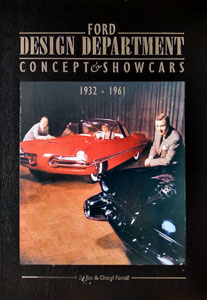
Ford Design Department—
Concepts & Showcars
1999, 10×13, 400 pages, Fully indexed
900 photos. Includes 150+ designers and sculptors, and highlights 100 concept cars.
ISBN 0-9672428-0-0
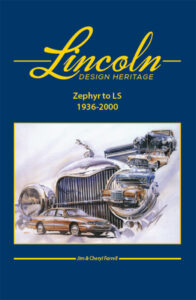
Lincoln Design Heritage:
Zephyr to LS (1936-2000)
2021, 10×13, 480 Pages, Fully Indexed
1,600 photos and illustrations
ISBN 978-0-9672428-1-1
The Ford book is $50 plus $7 S&H (US). The Lincoln book is $85 plus $10 S&H (US). Both books bought together are $110 plus $17 S&H (US). To order, email: cfarrell57@gmail.com

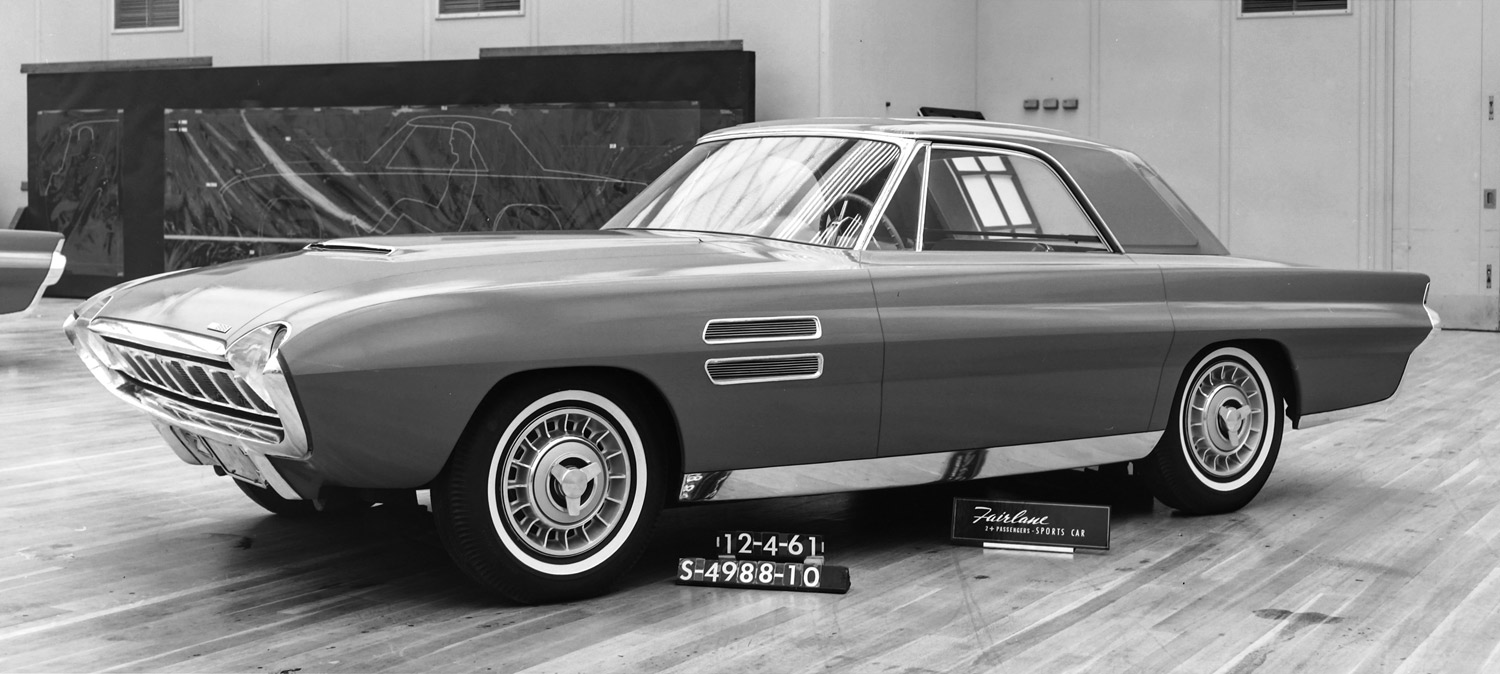
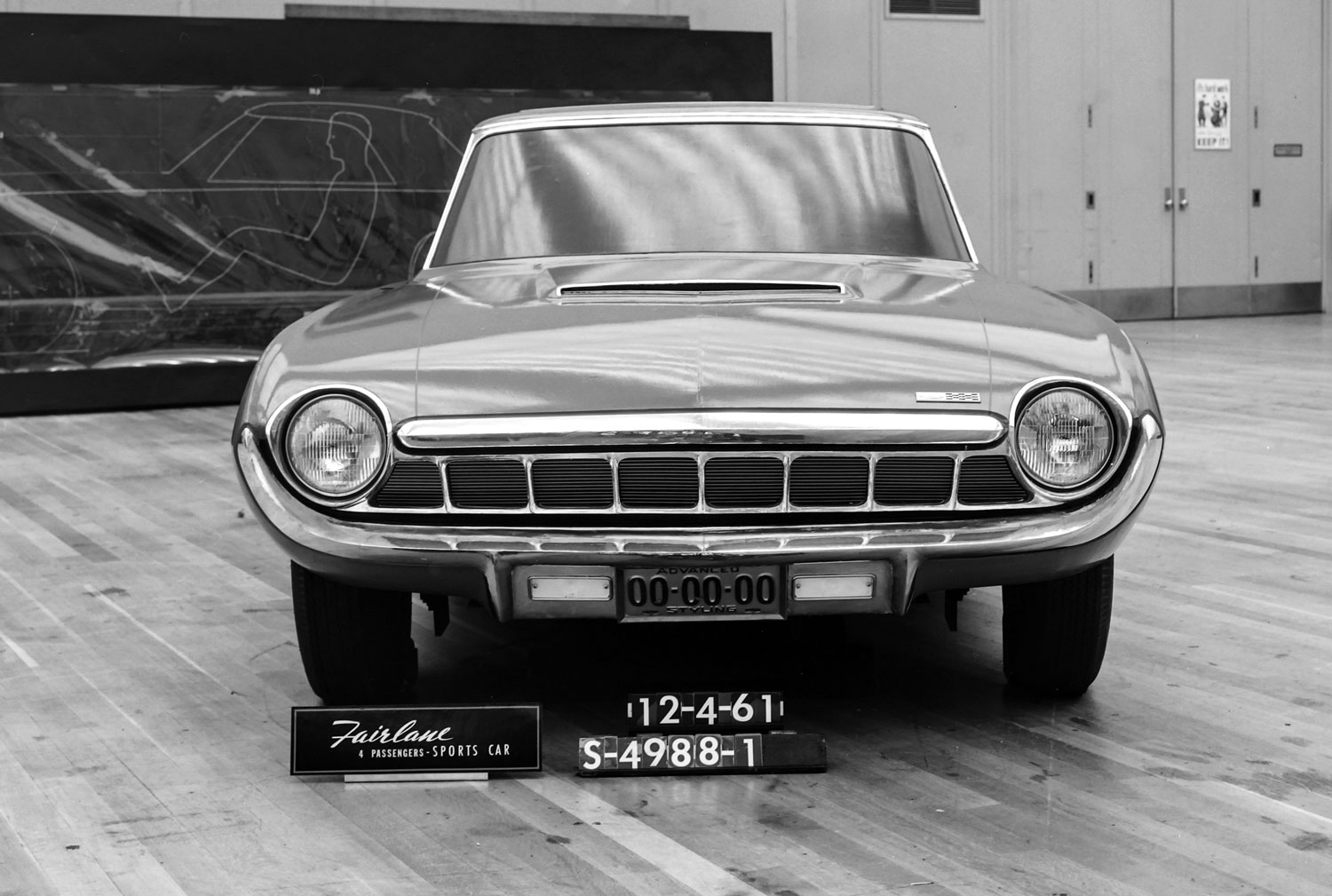
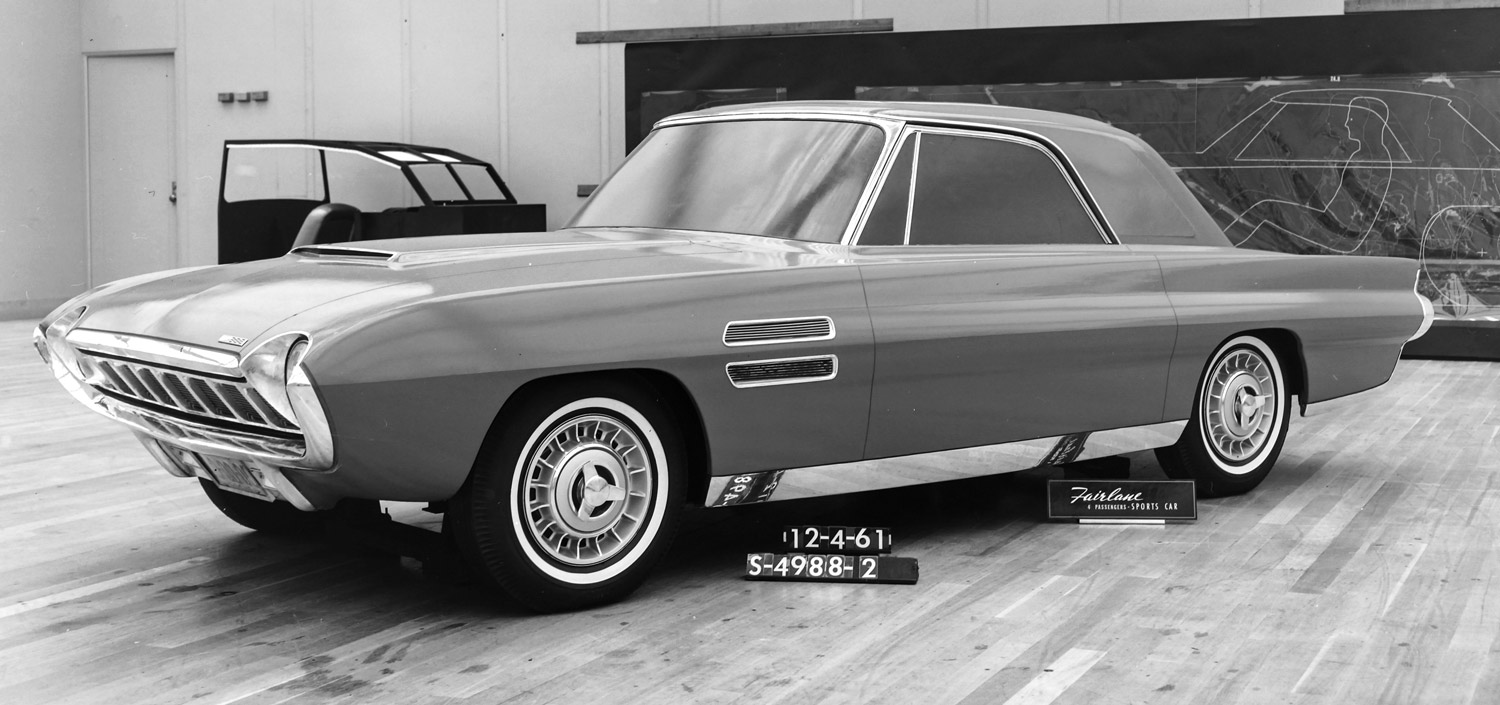
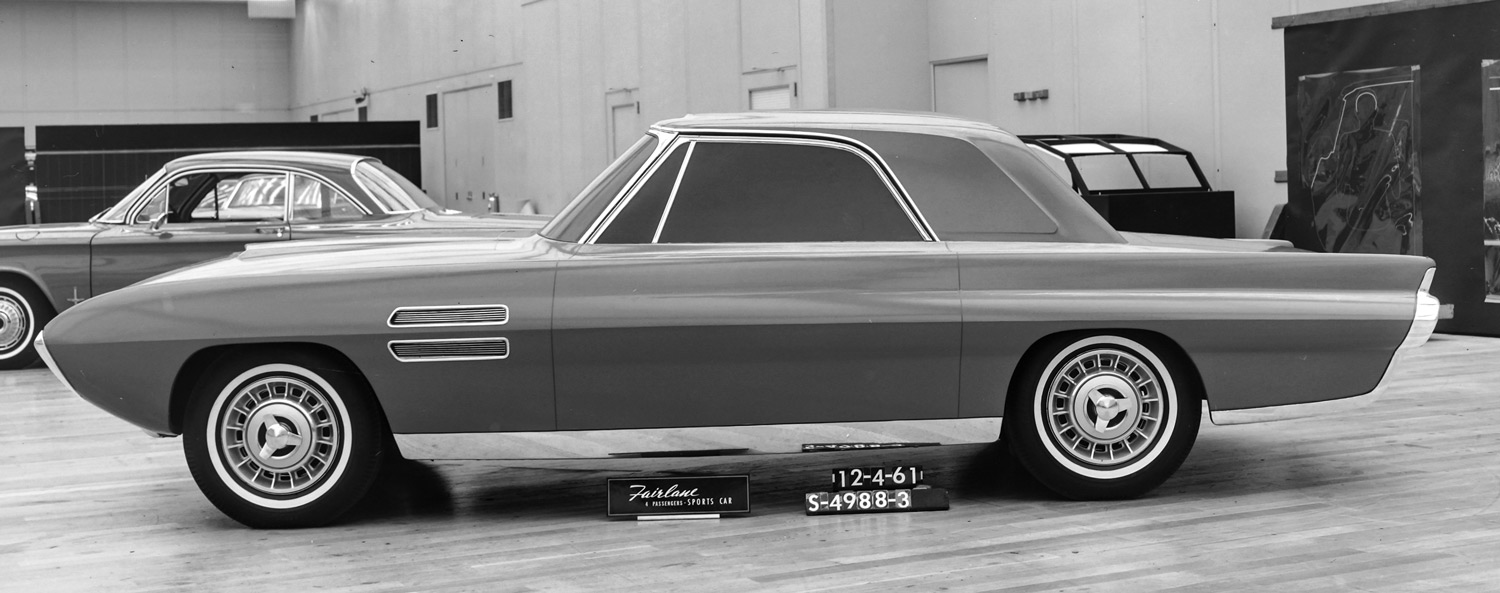
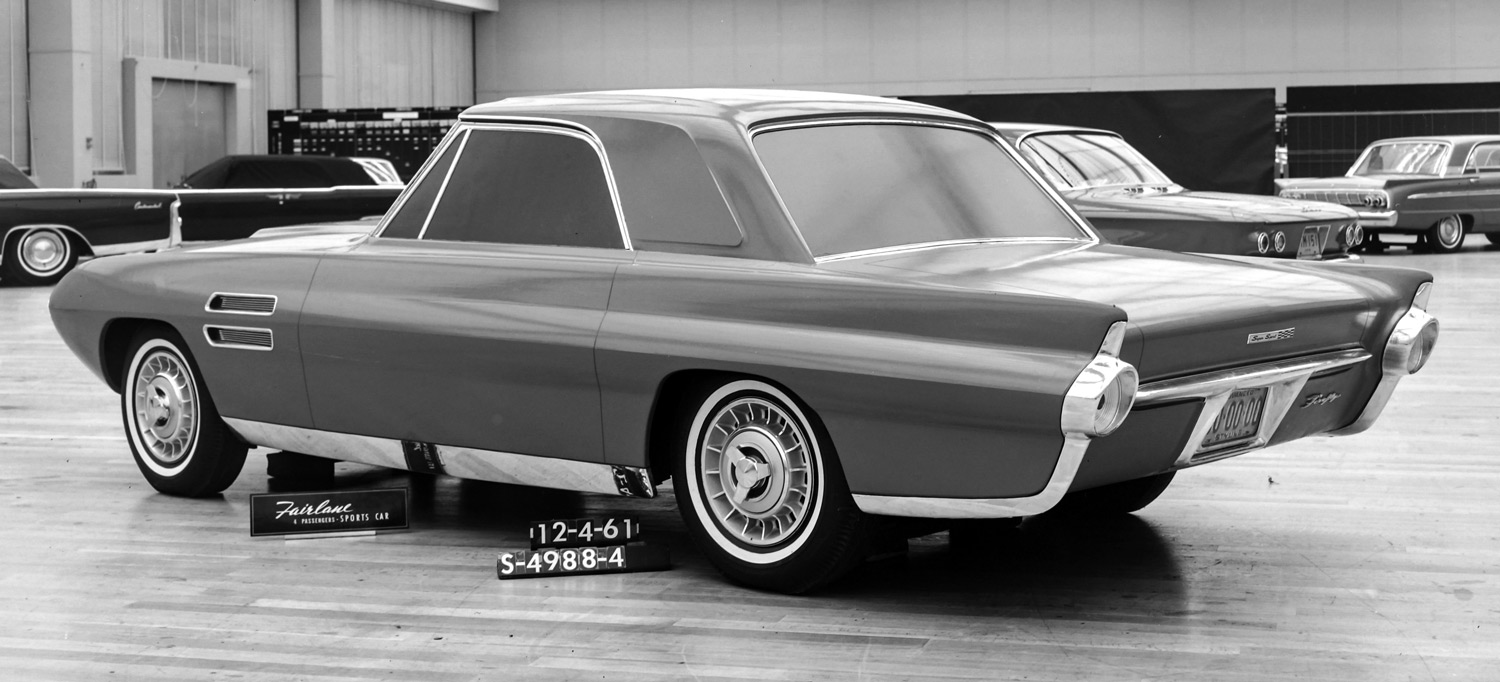
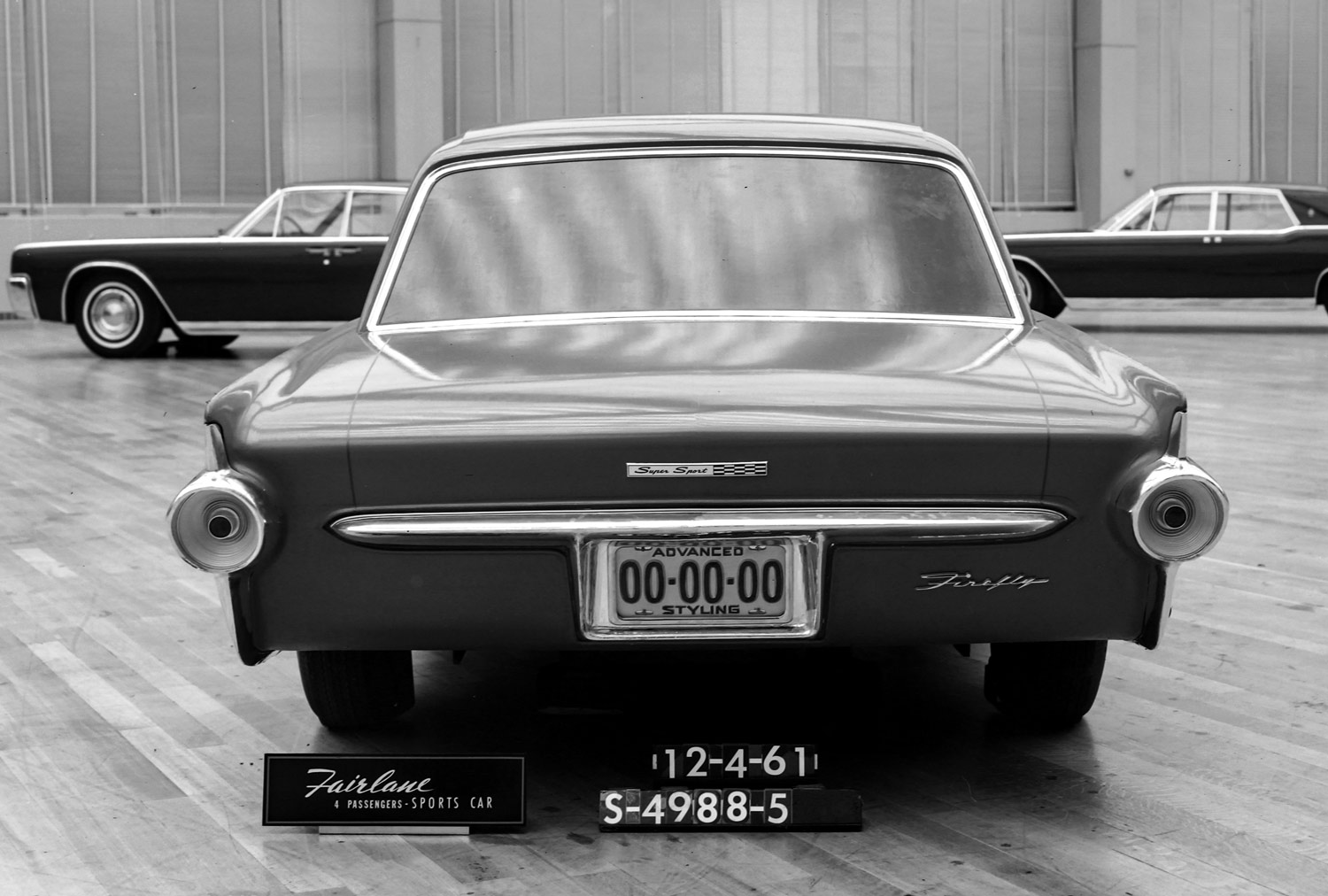
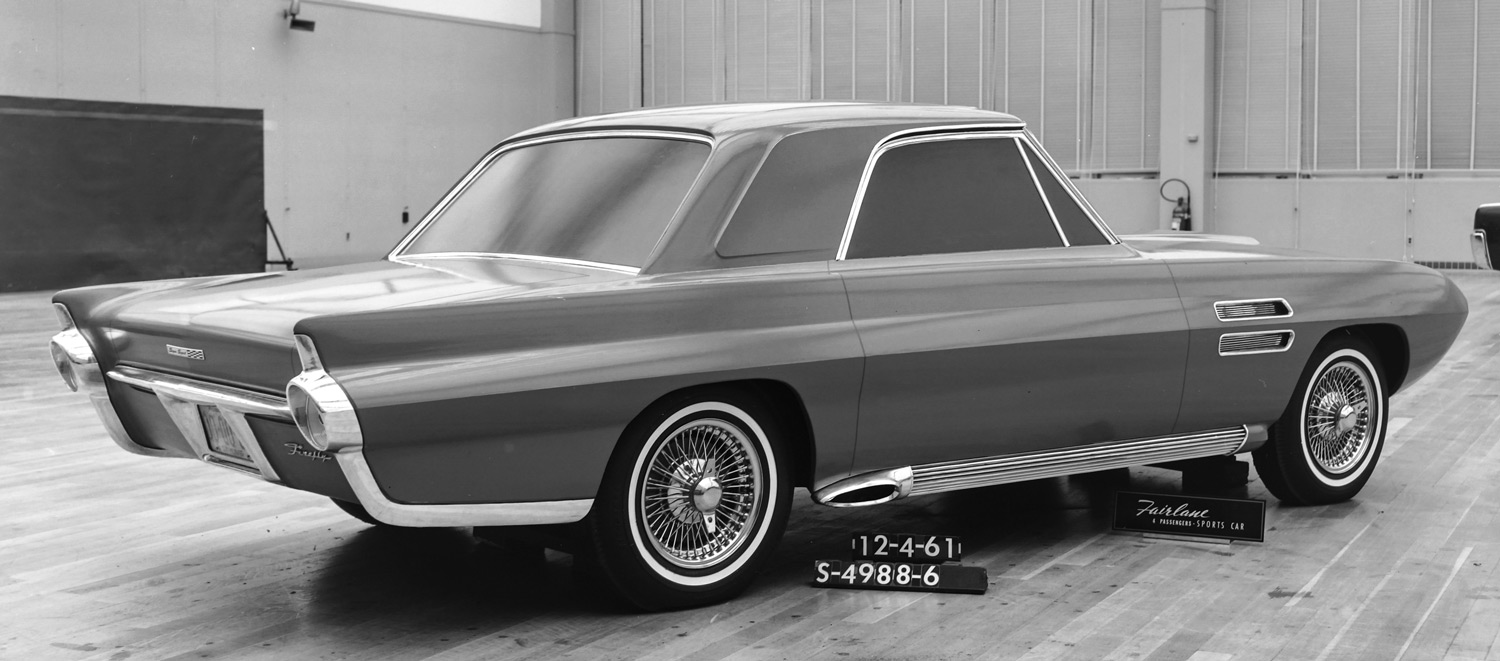
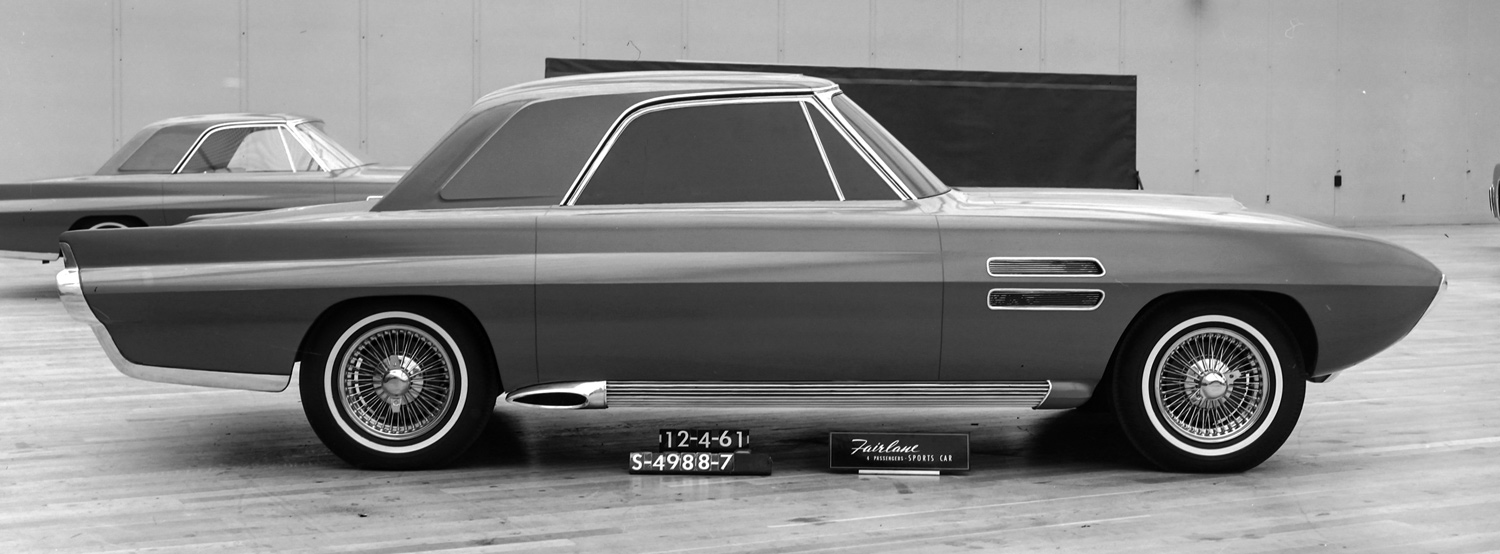
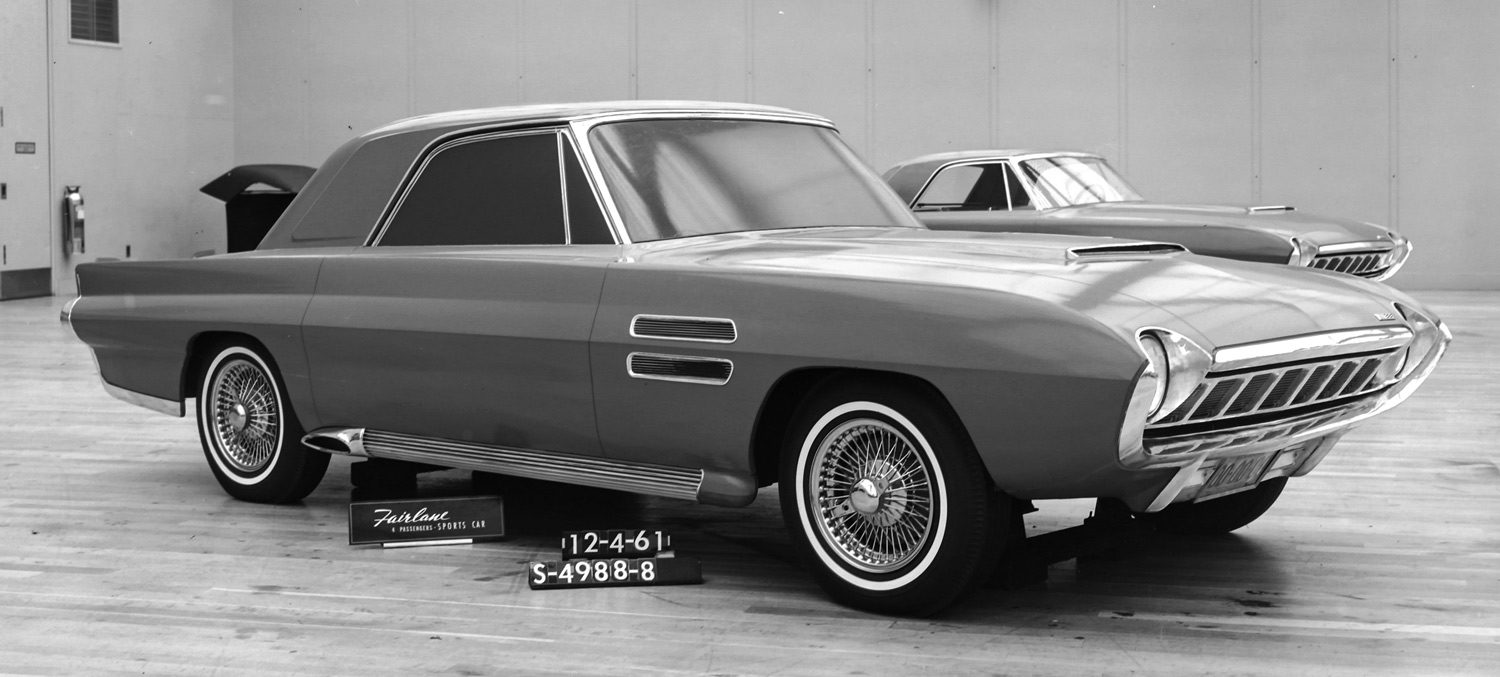
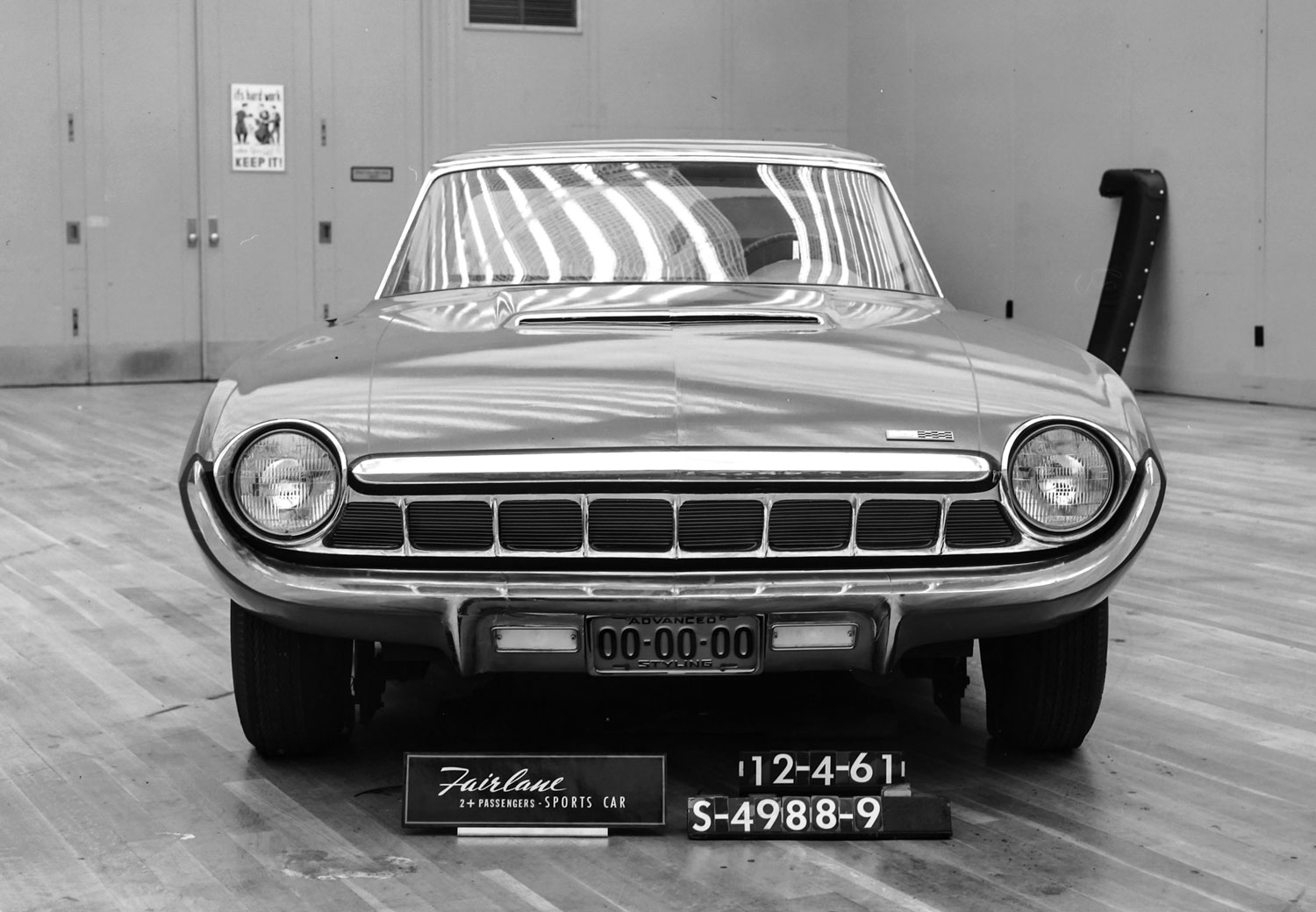
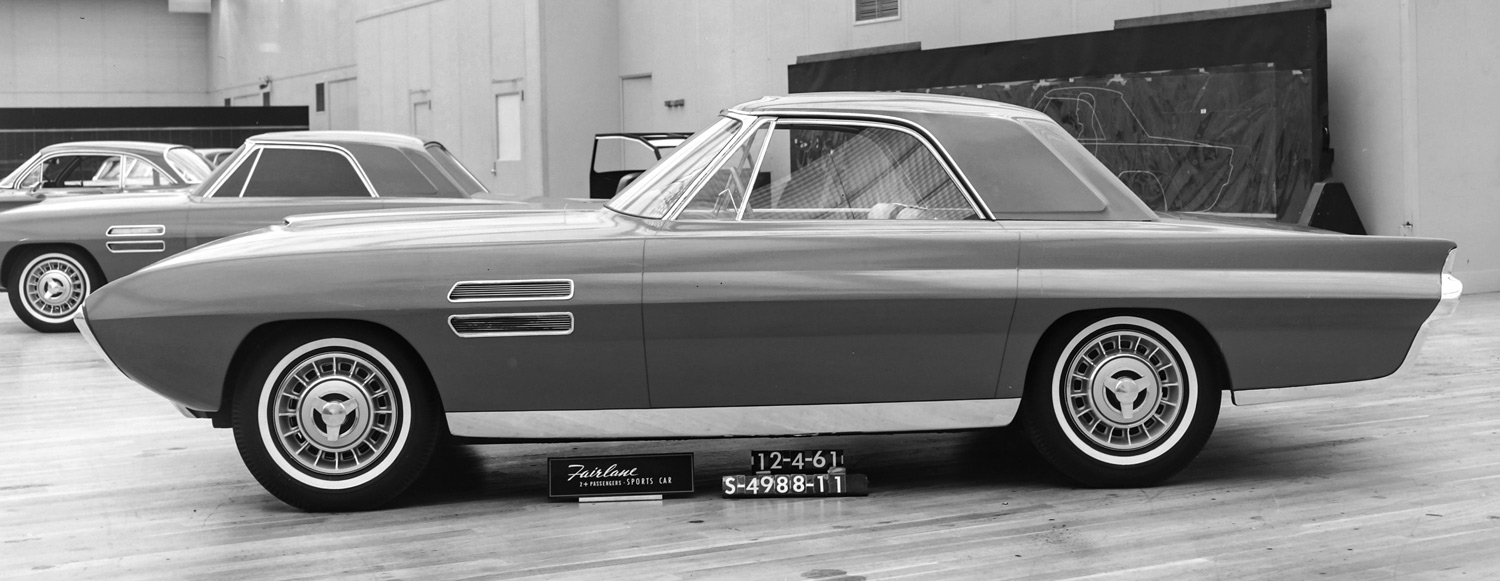
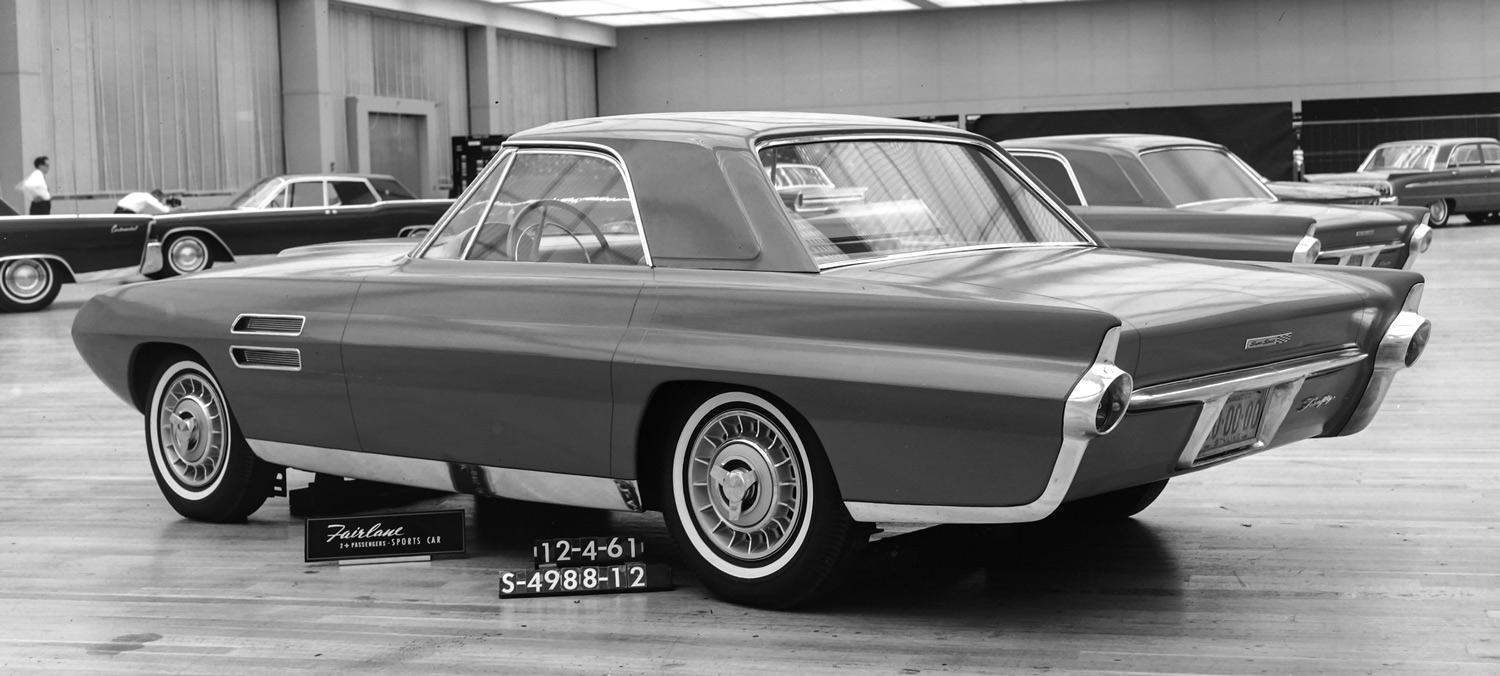
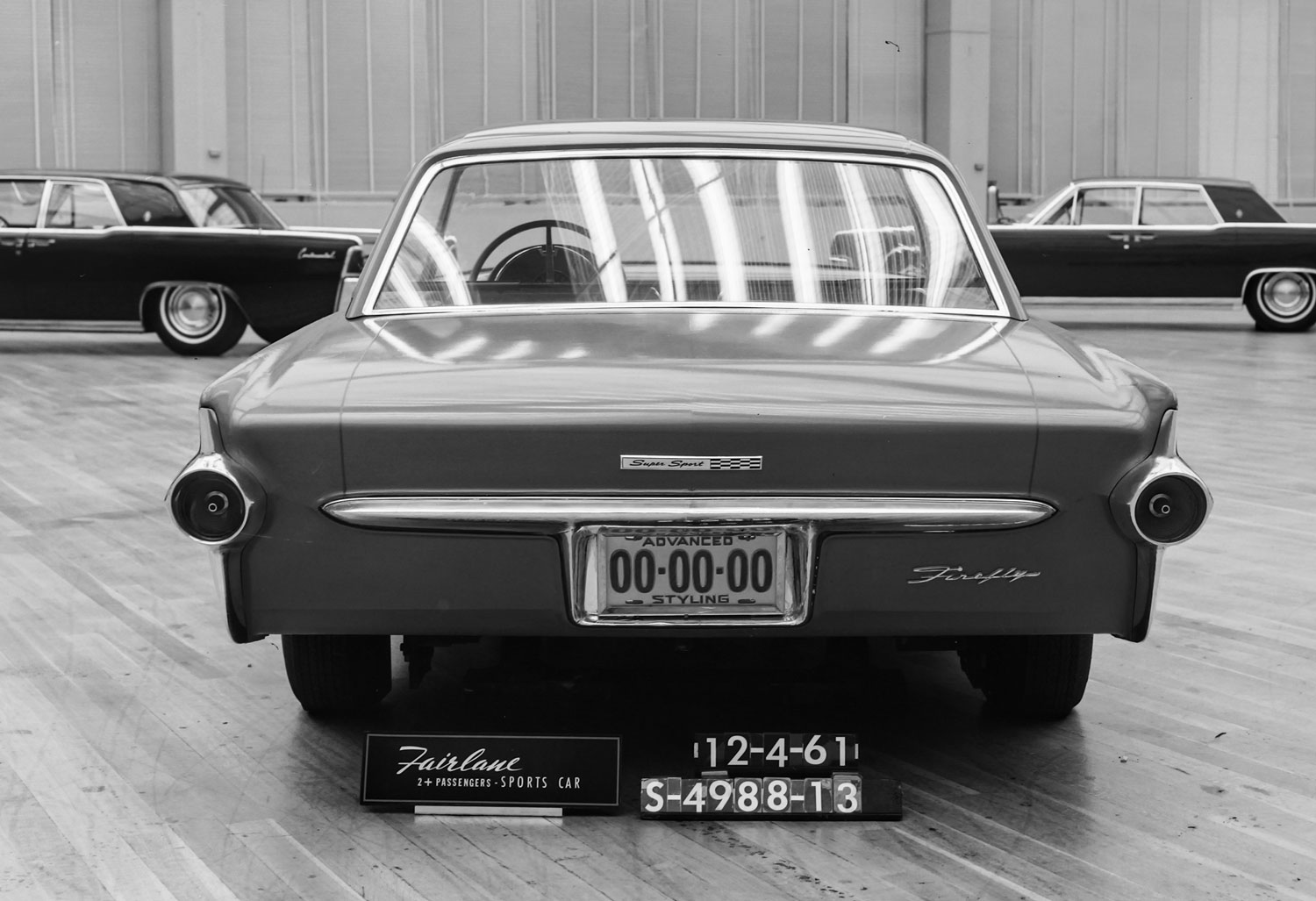
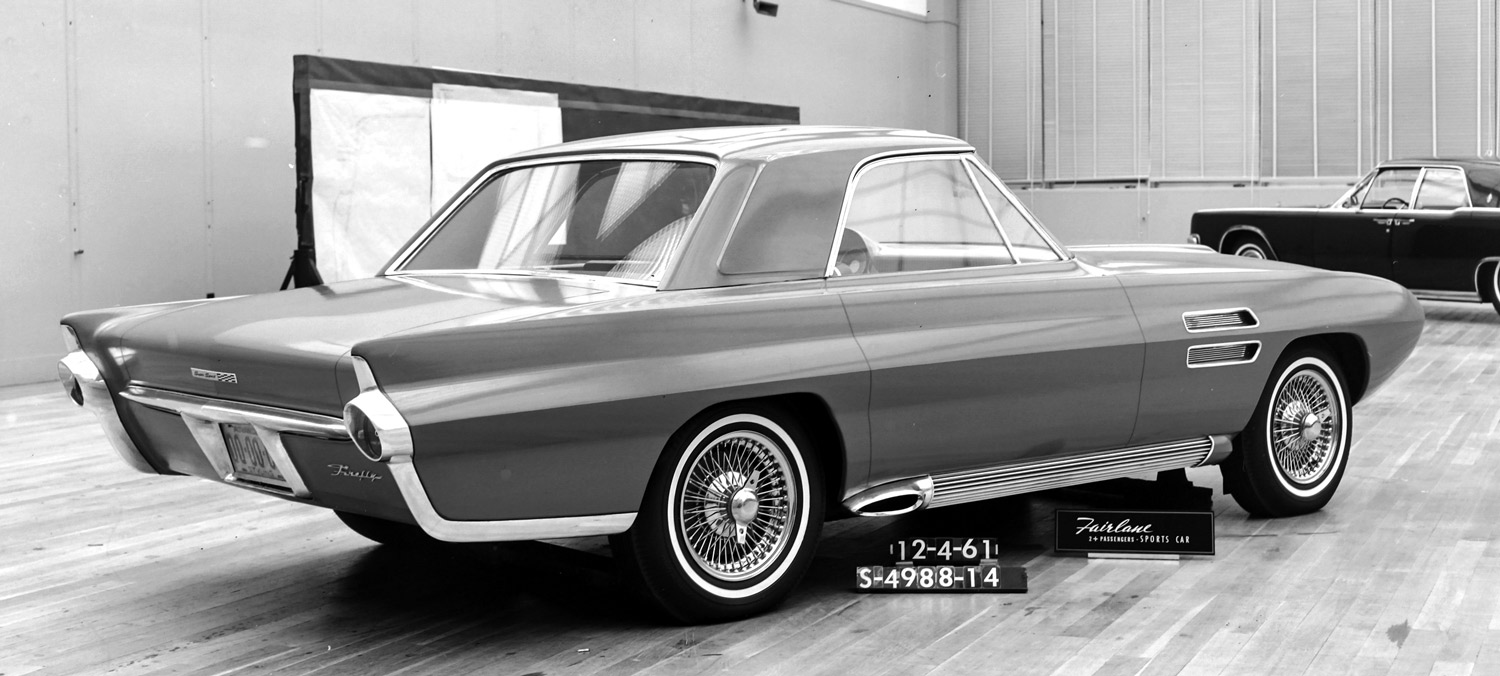
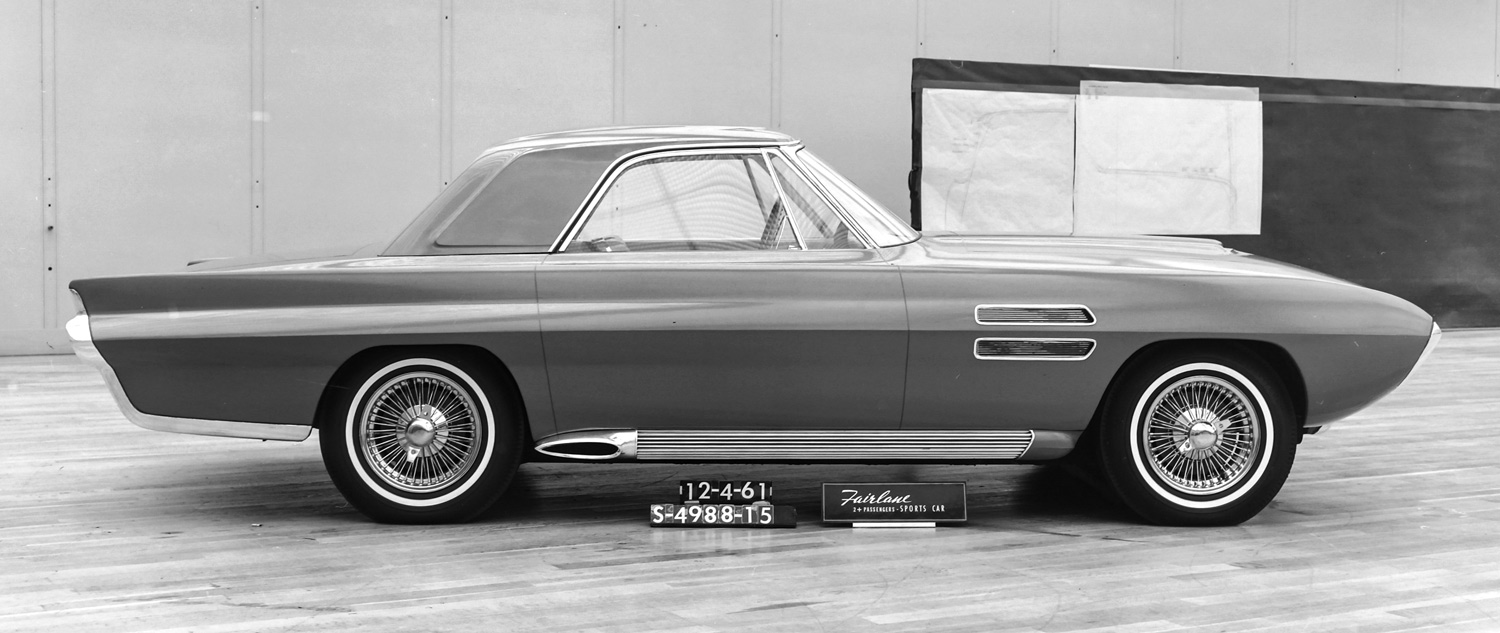
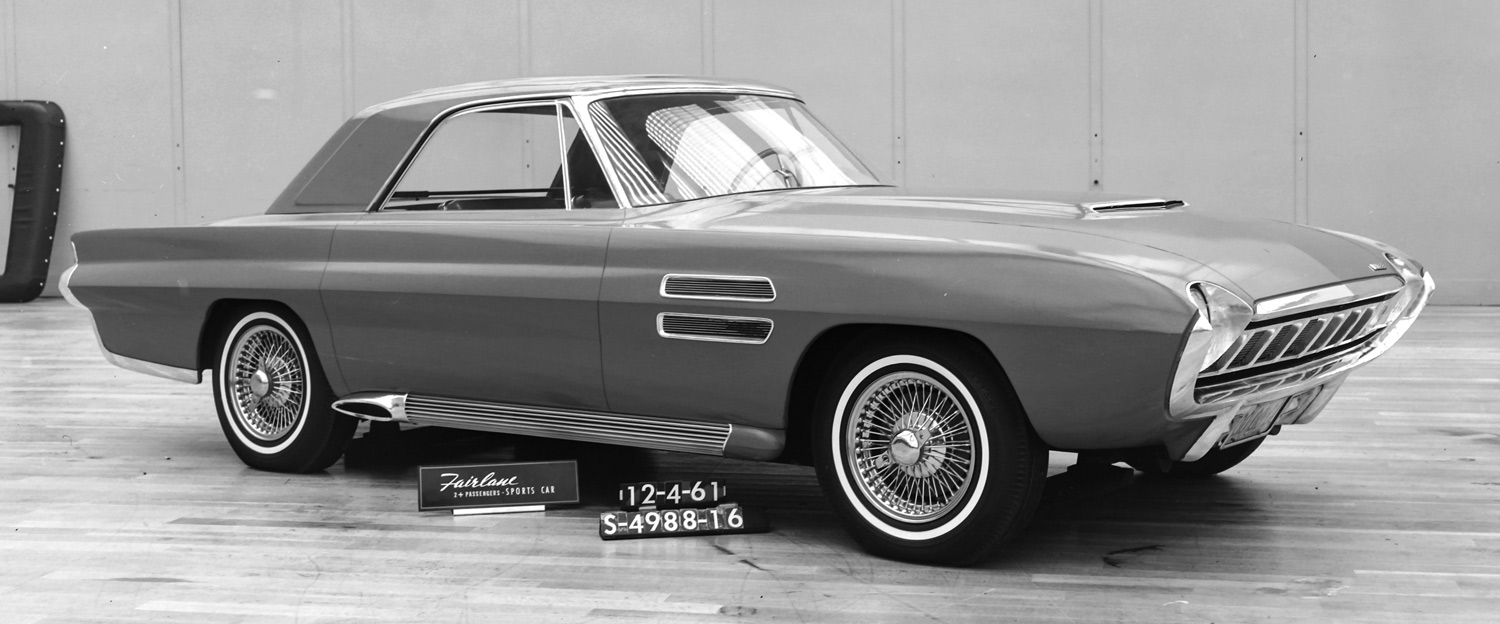
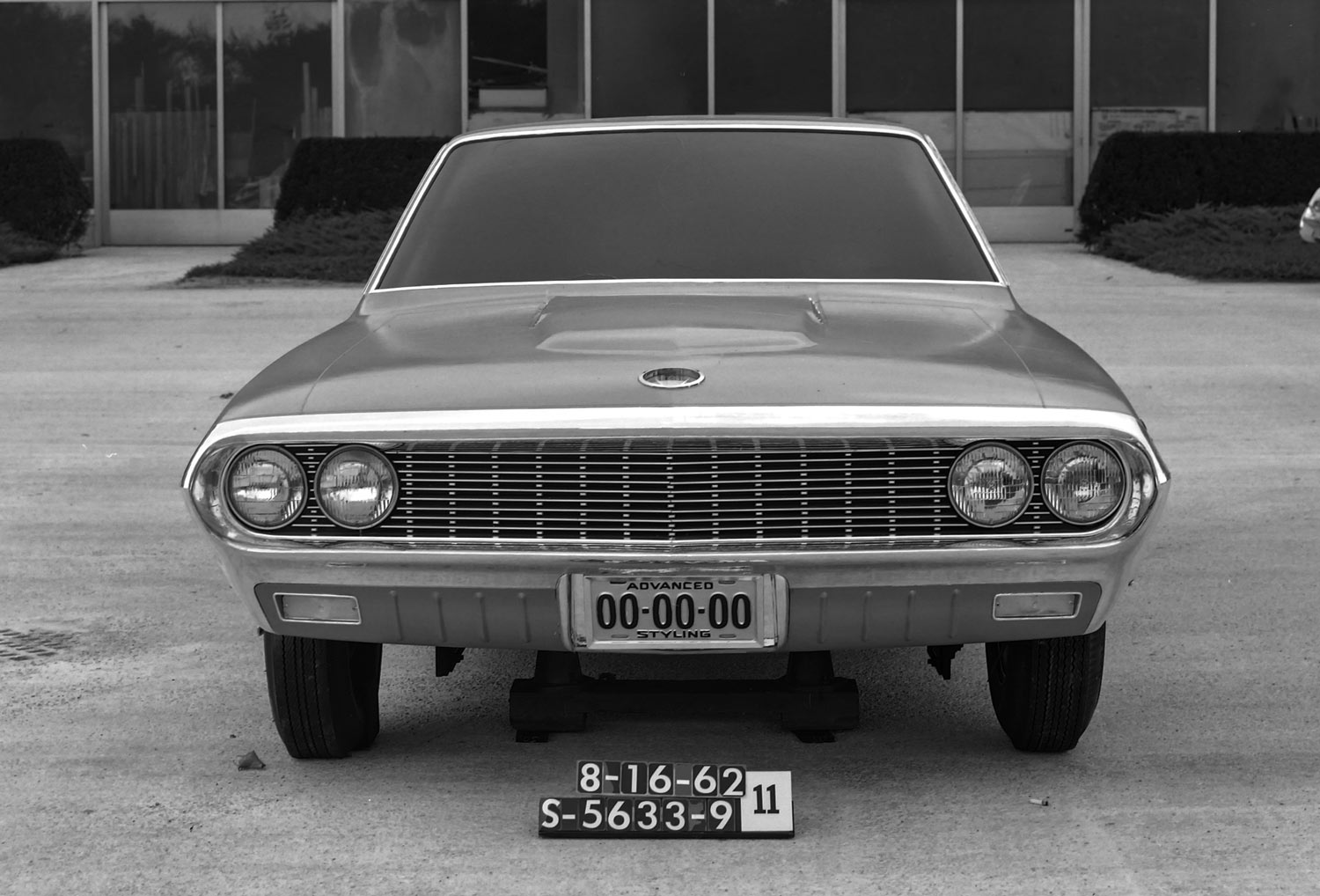
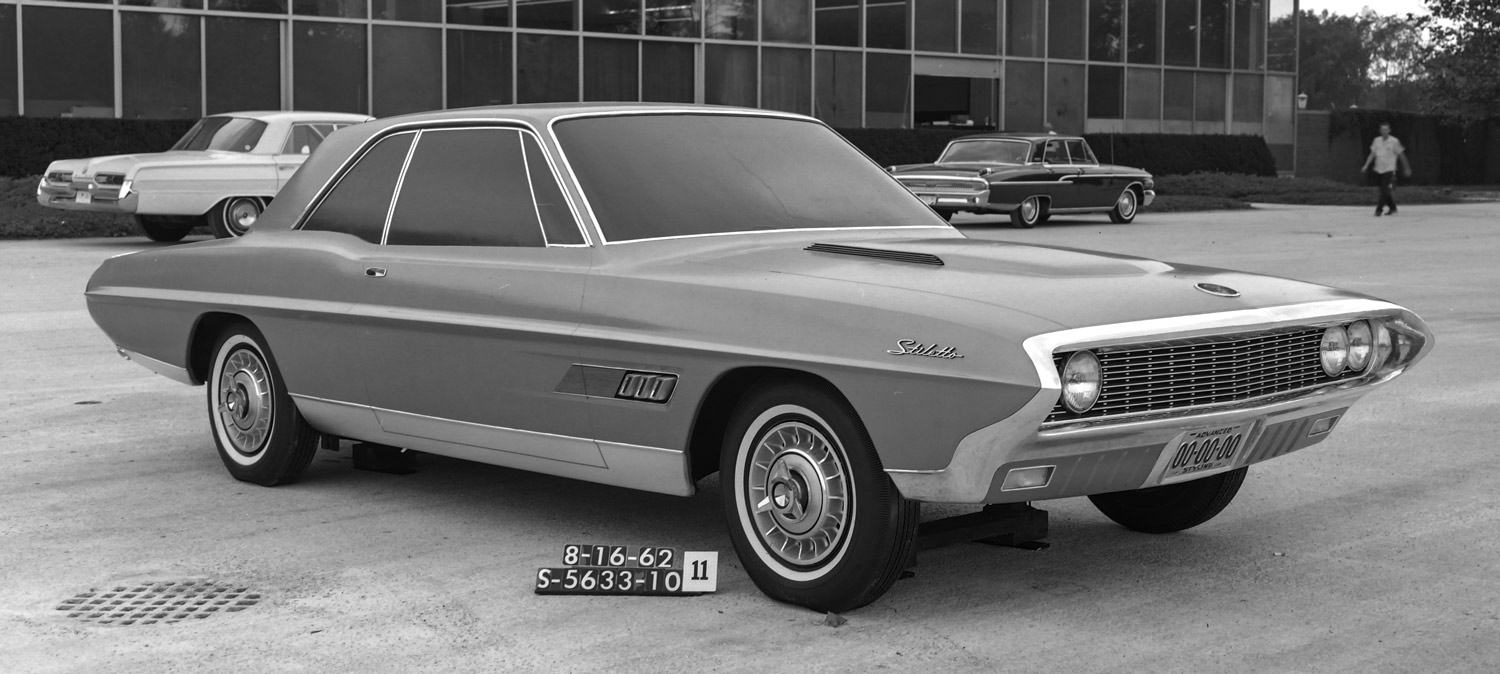
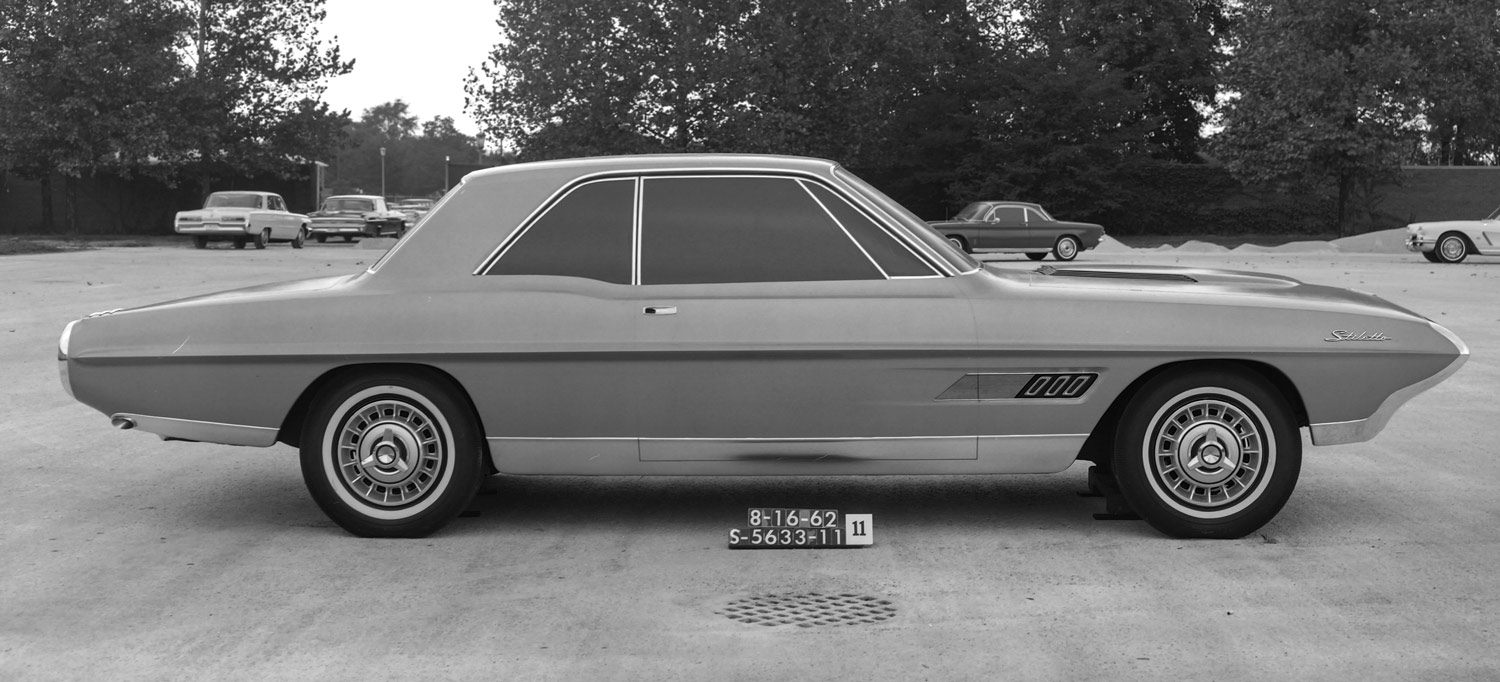
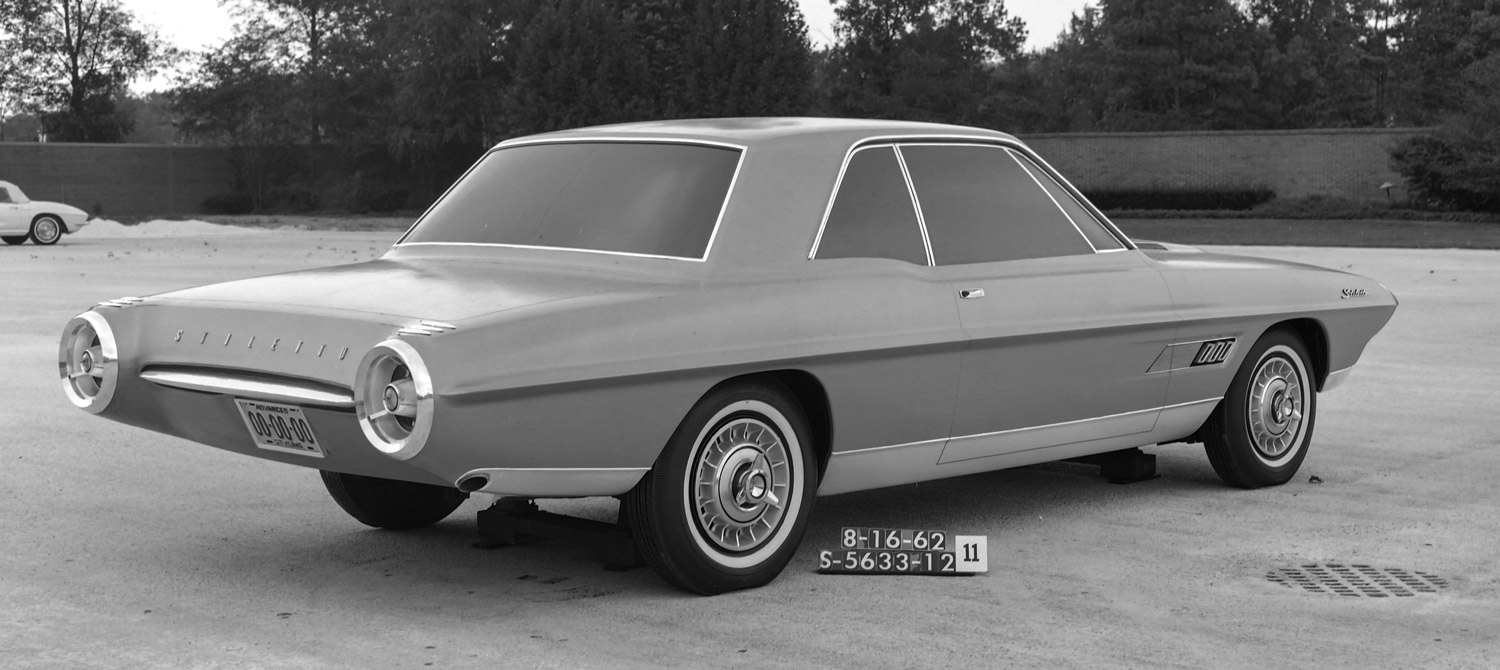
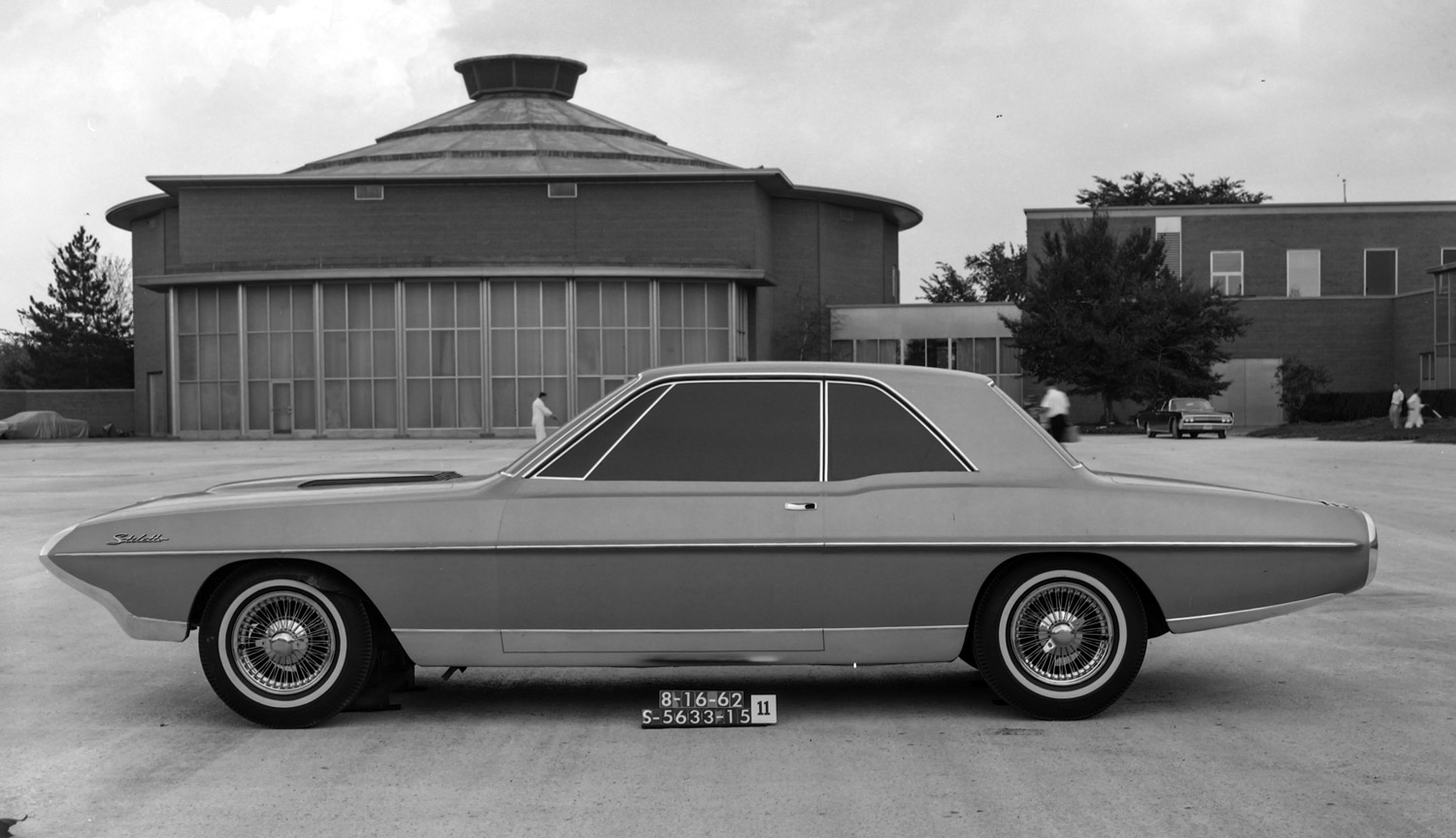
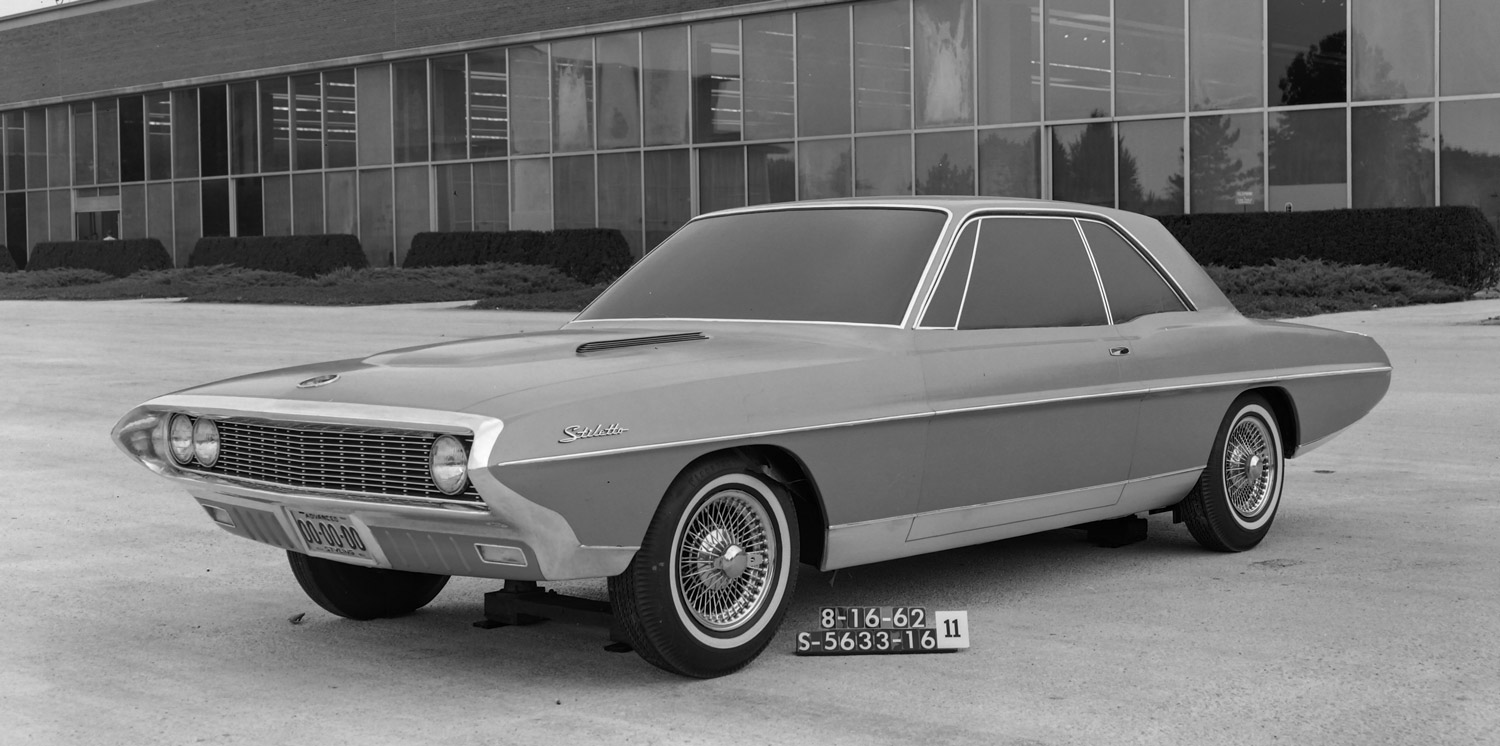
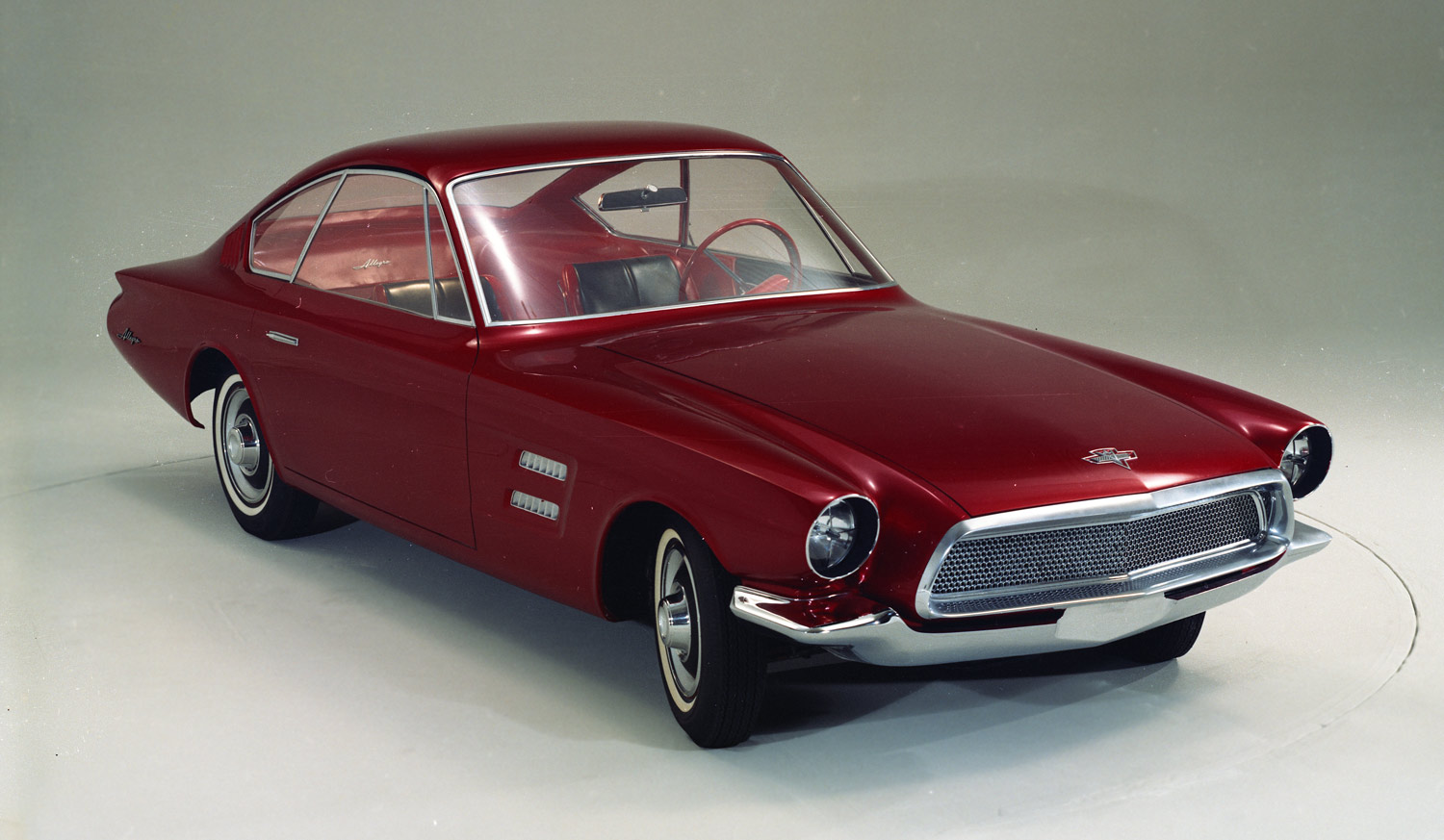
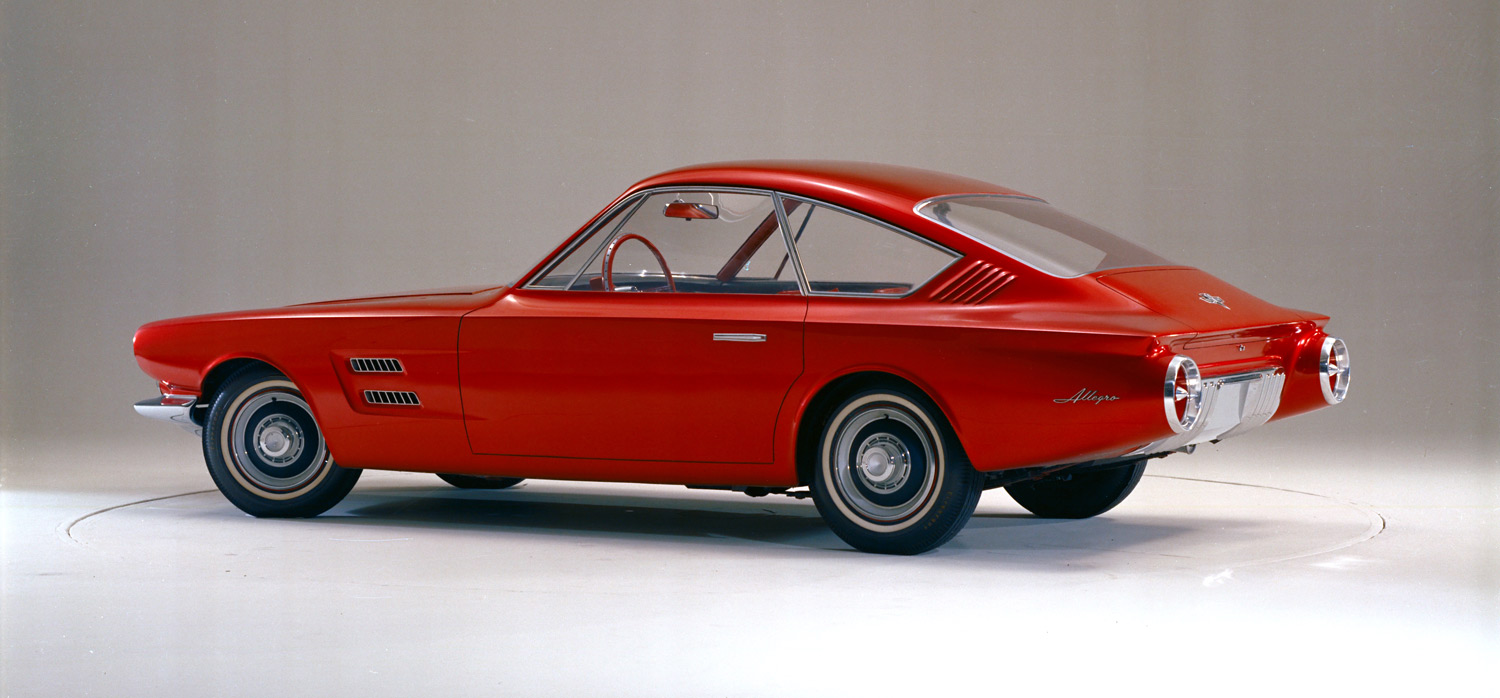
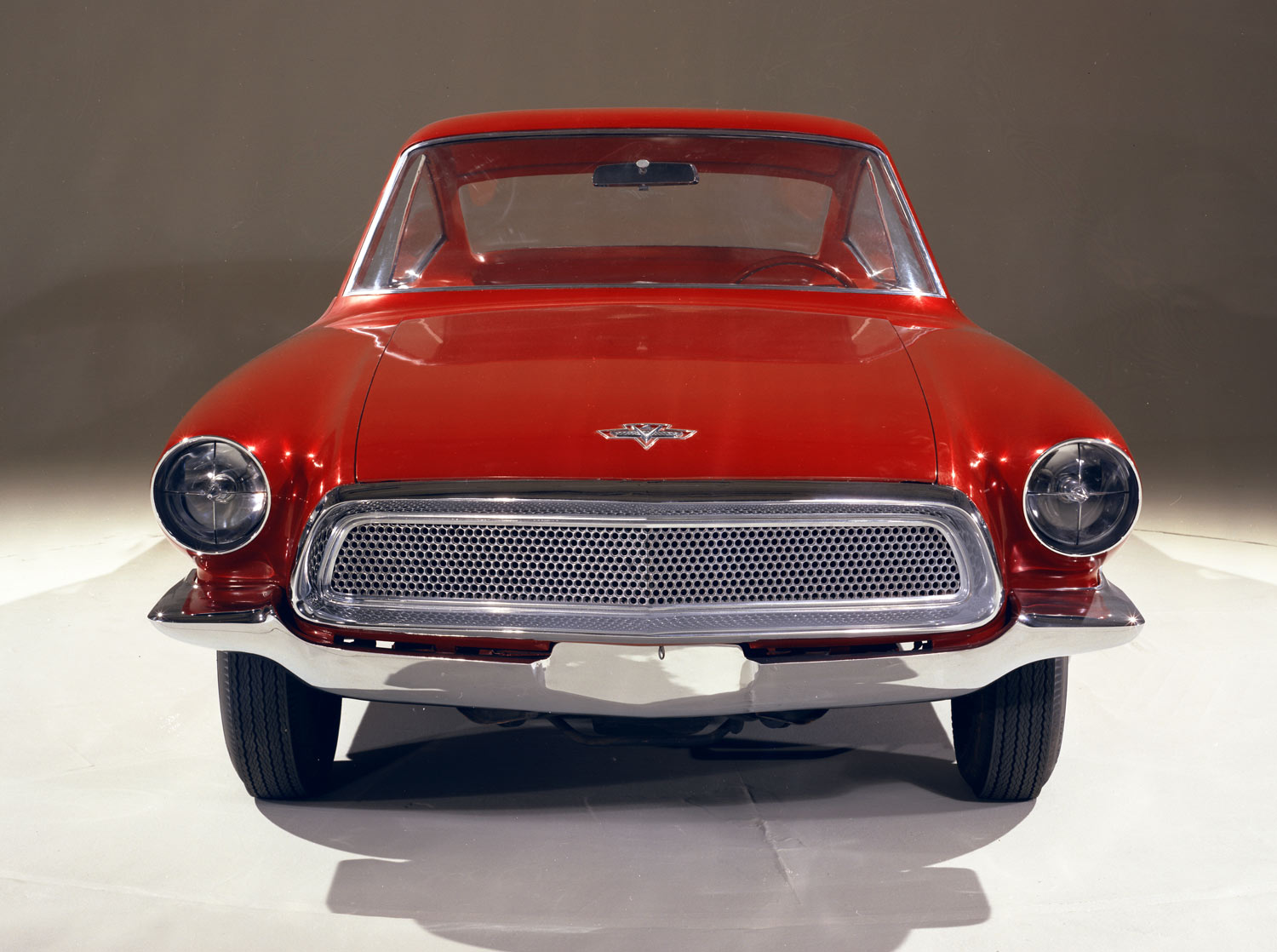
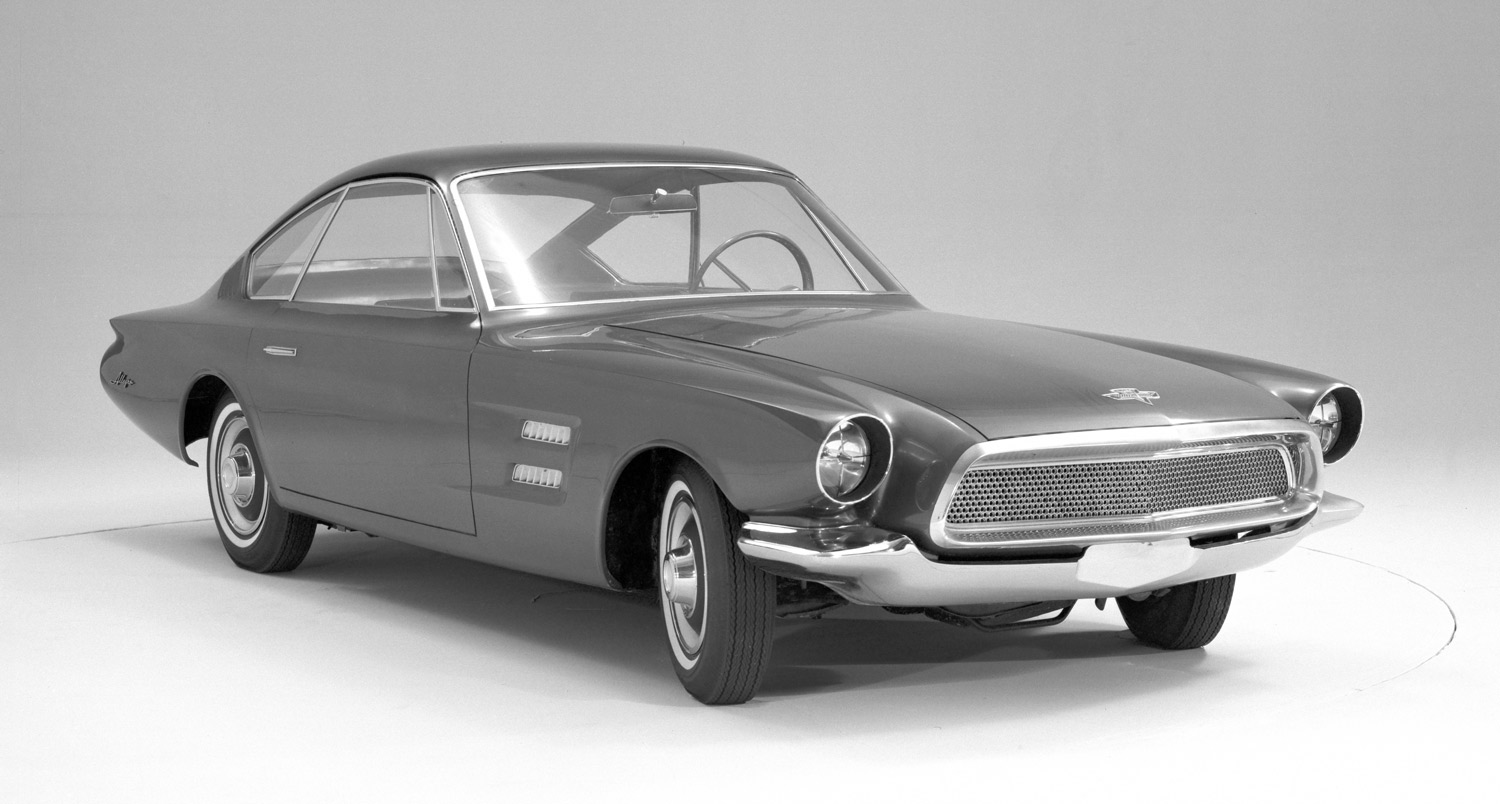
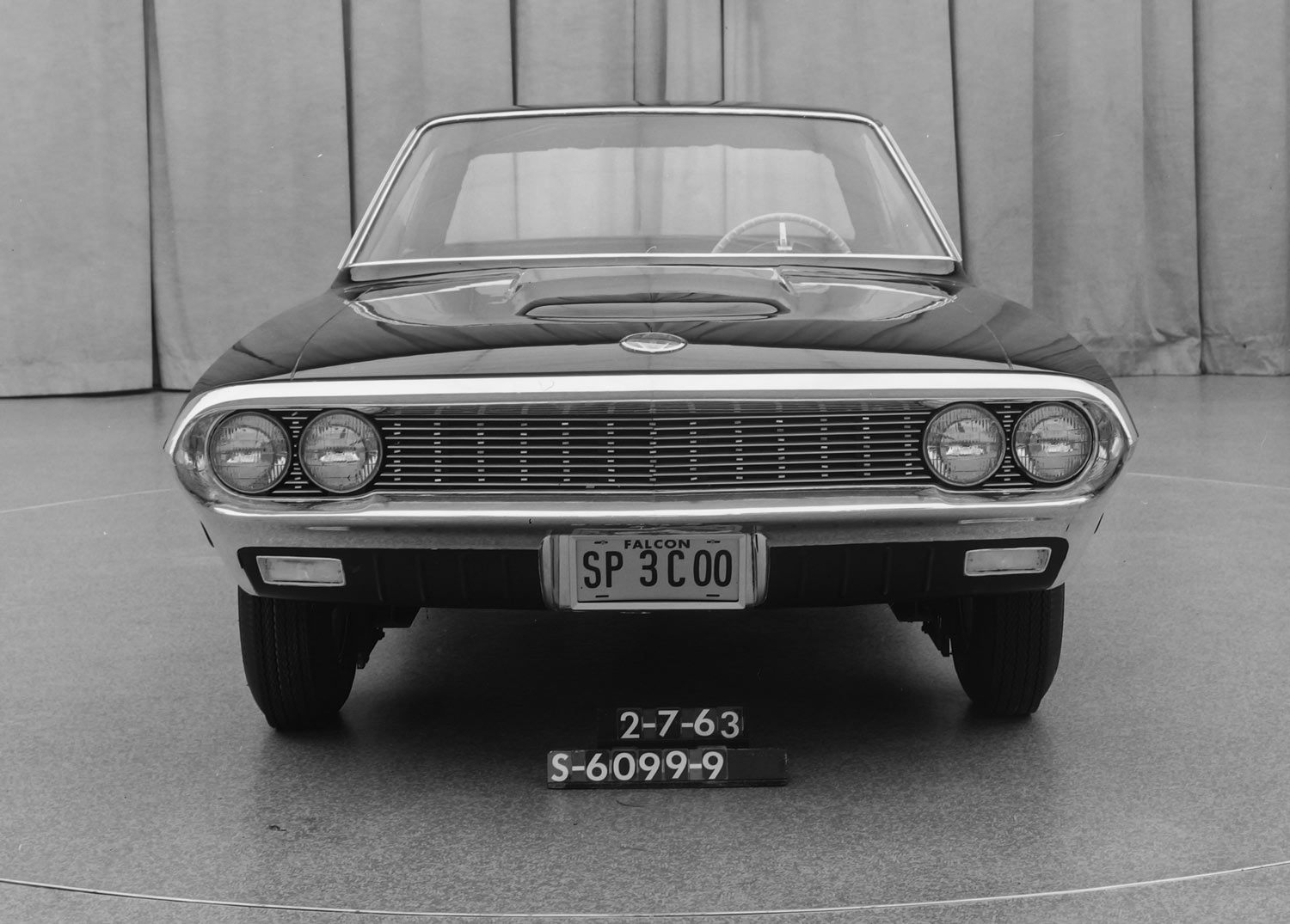
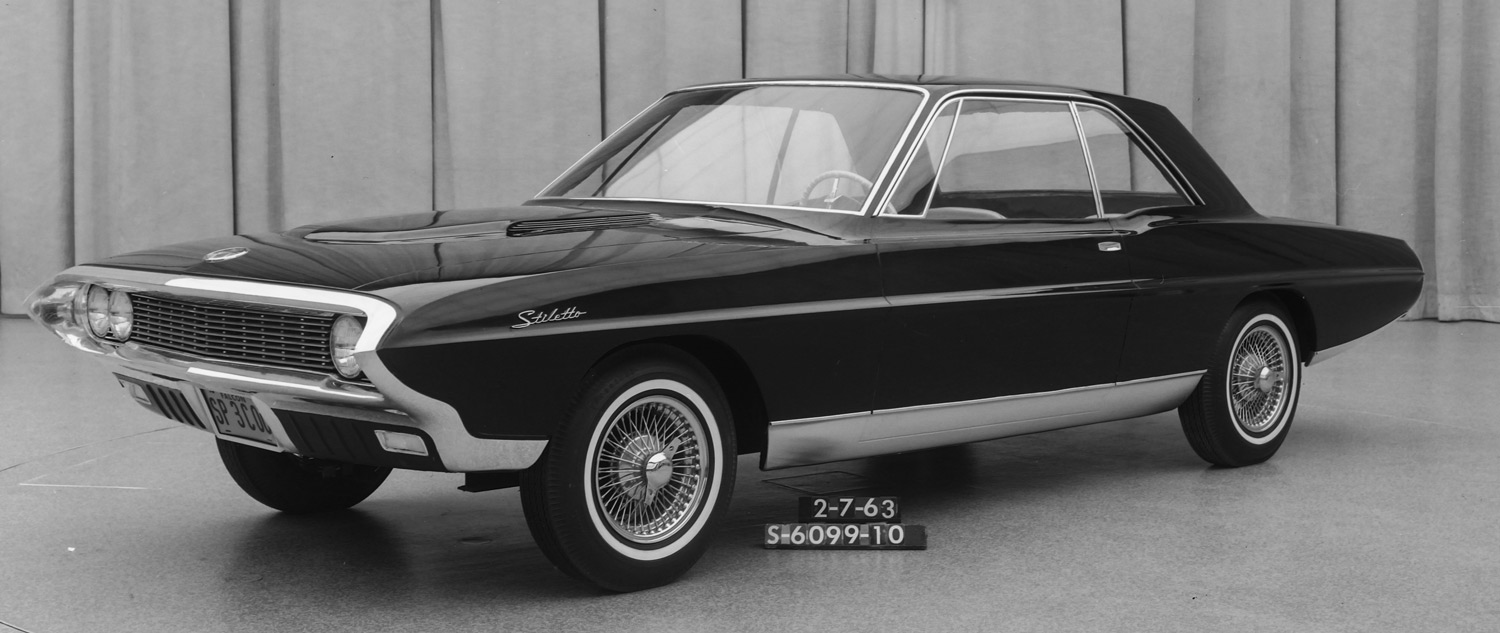
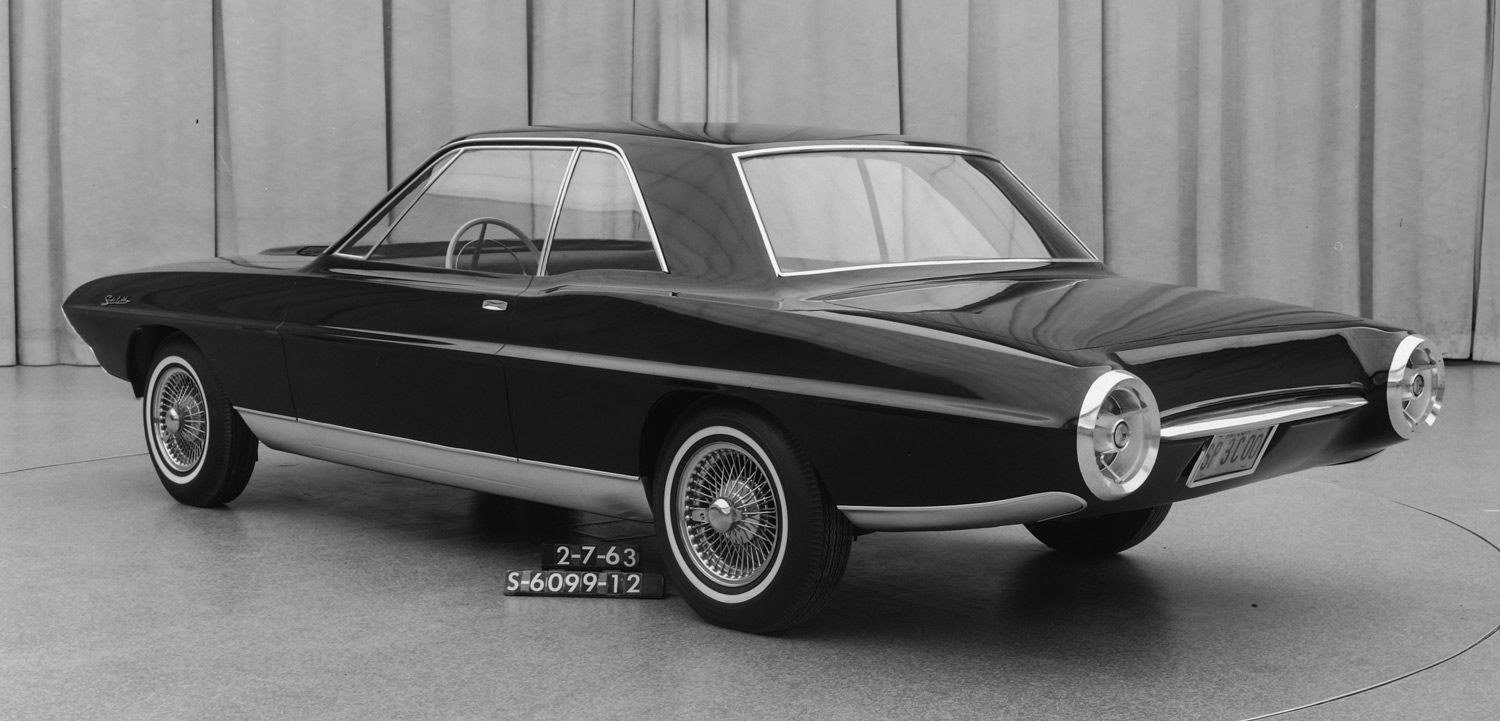
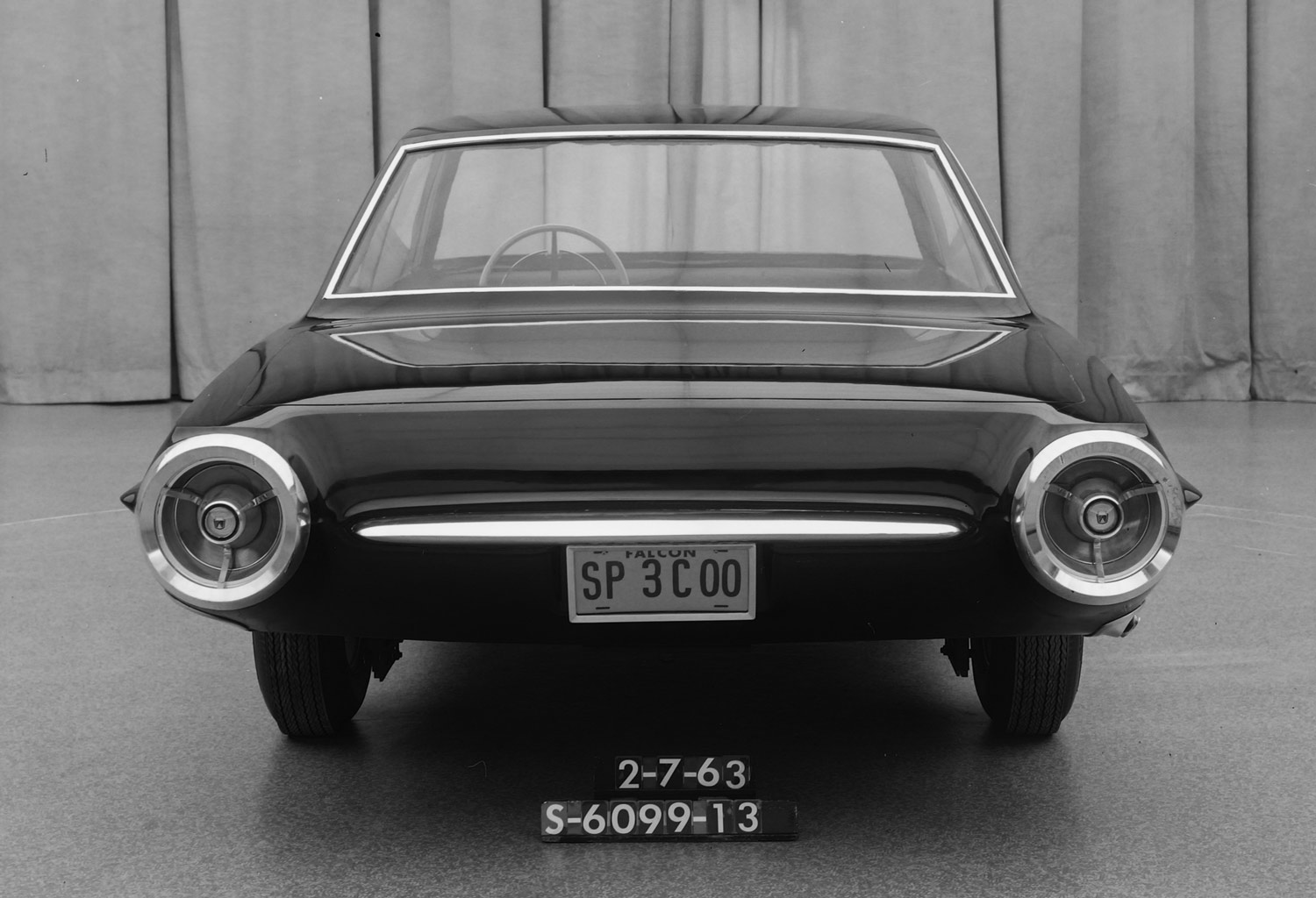
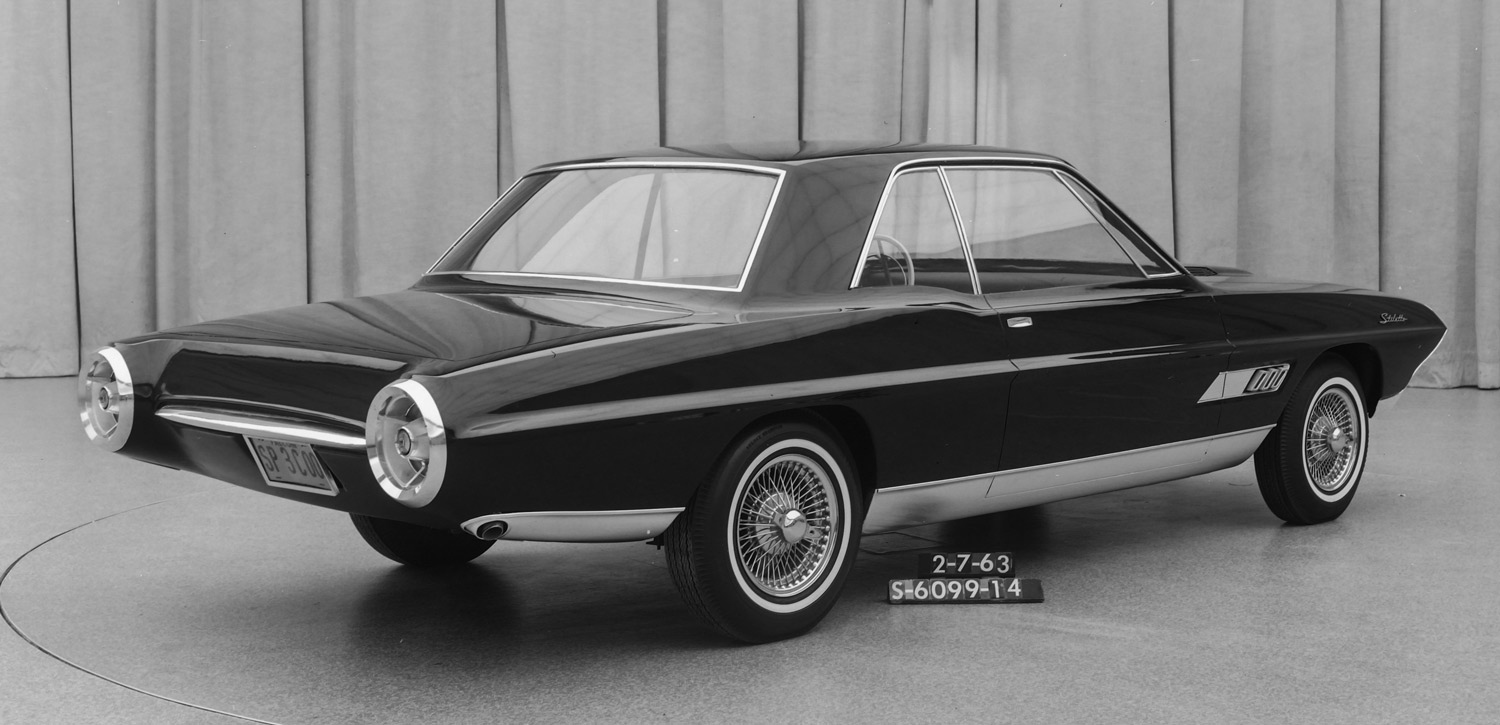
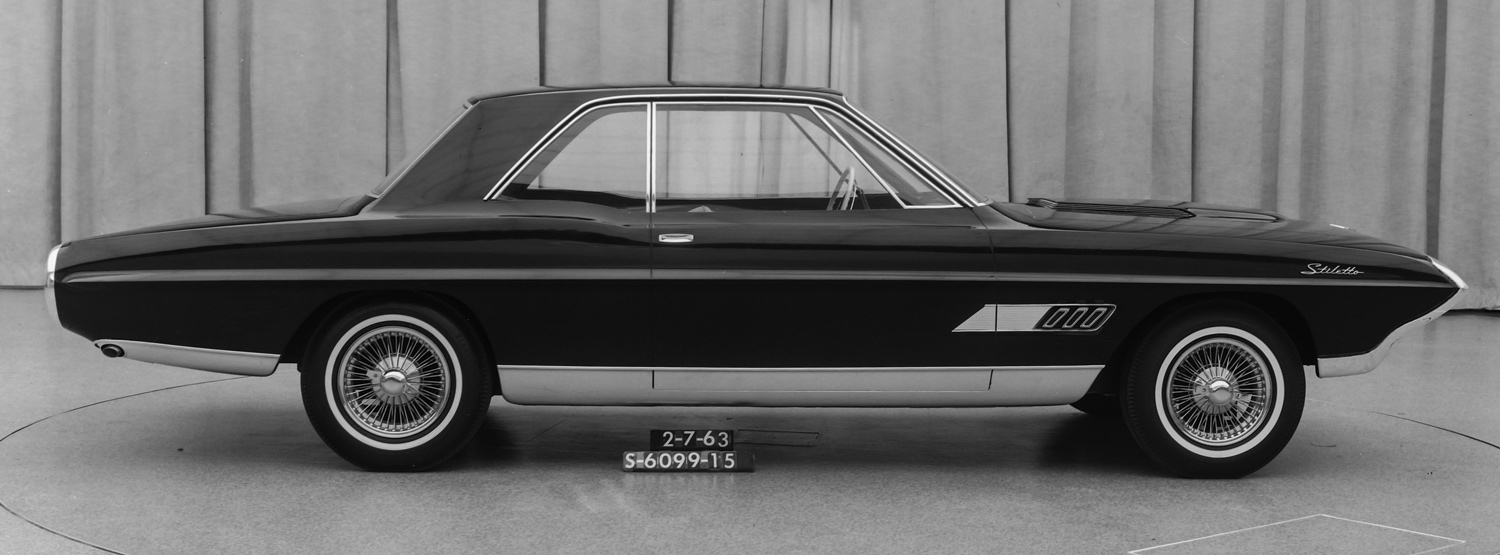
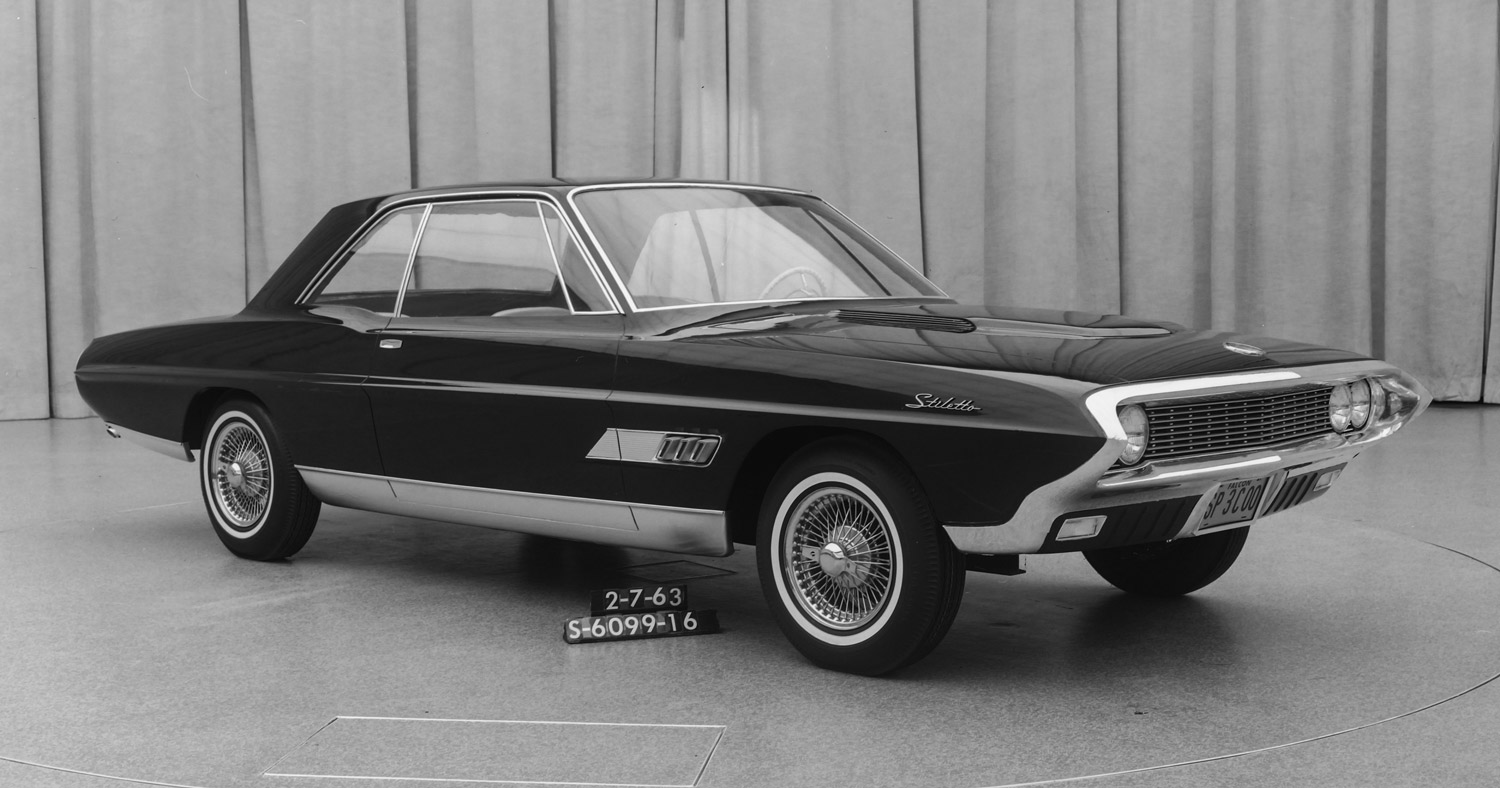
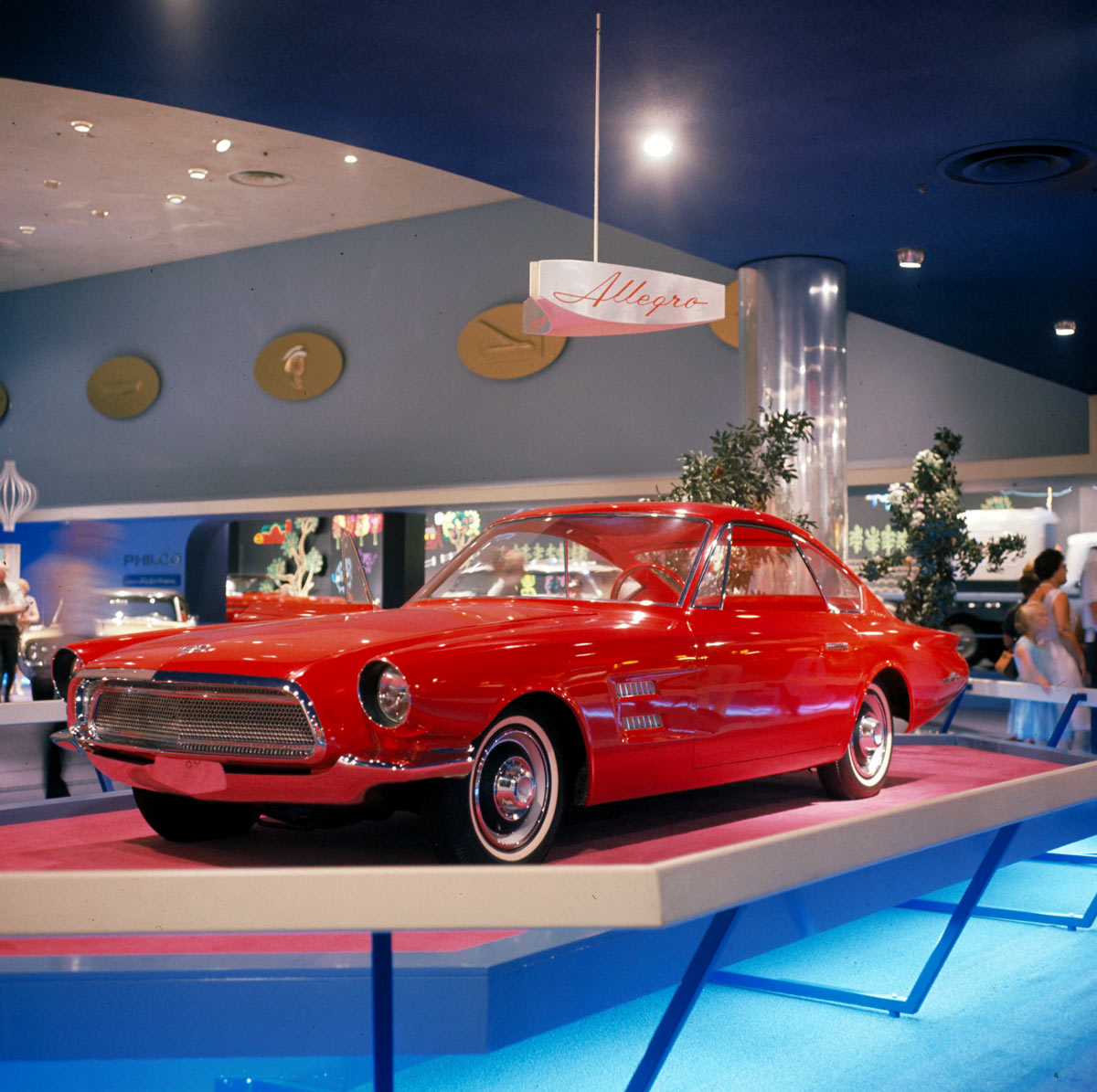
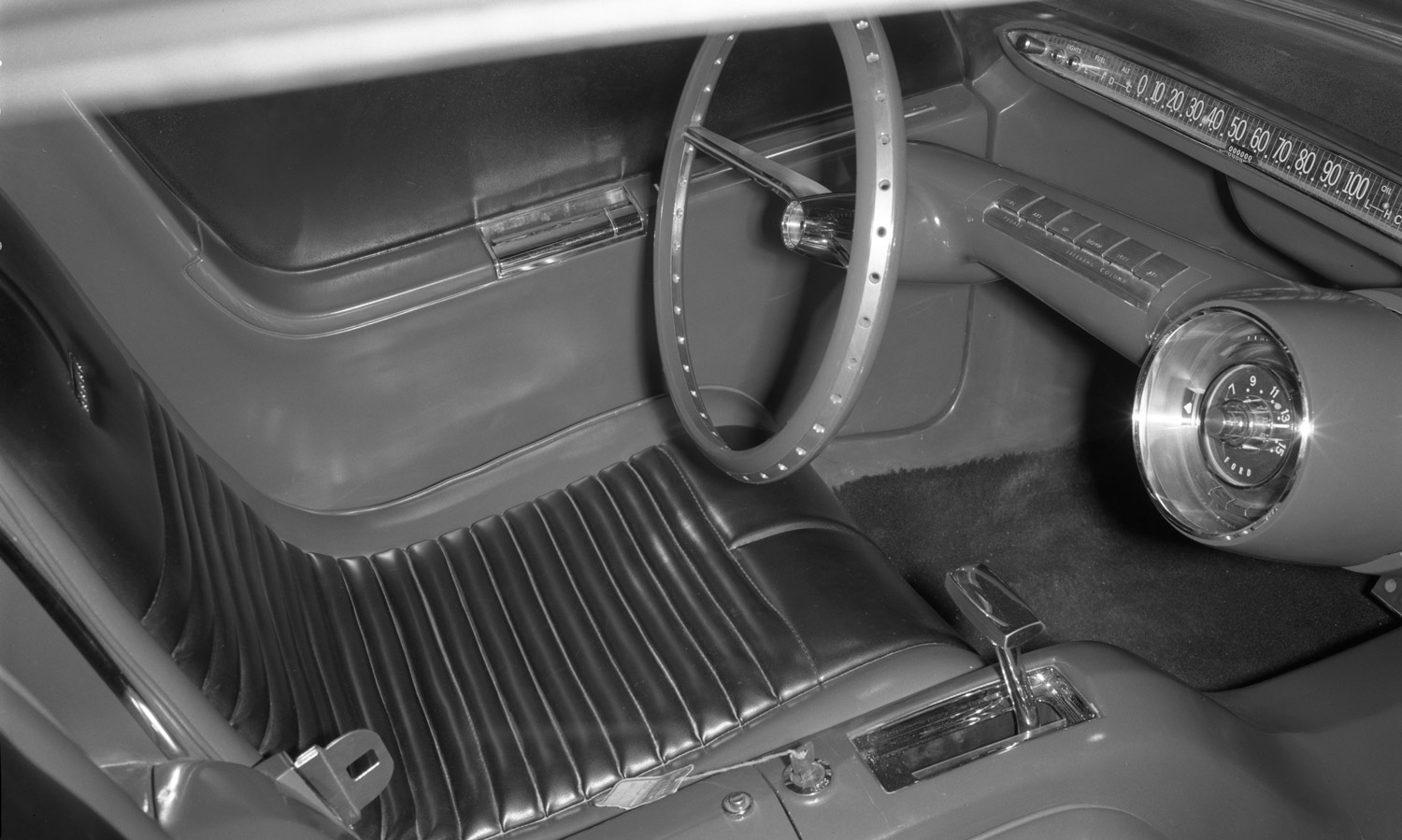
I noticed a corvette in the background
You can see Elwood’s finger prints on these cars!
Kelly,
I think you meant to say Corvair.
Yes. A Corvair inside and a Corvette and a Corvair outside.
The T-Bird design would have been nice to produce in 1958-59 instead of the big (4) passenger T-Birds.
The proportions of the Allegro are a little ungainly, but at least the car looks new. The Fairlane and Stiletto are pretty, but they’re tied to the past. They look as if Engel were called back to do a redesign of the ’55-57 Thunderbird.
Love the article.
I hope there’s an article coming about the design for the ’63 Ford and its evolution into being a “63 1/2” Fastback.